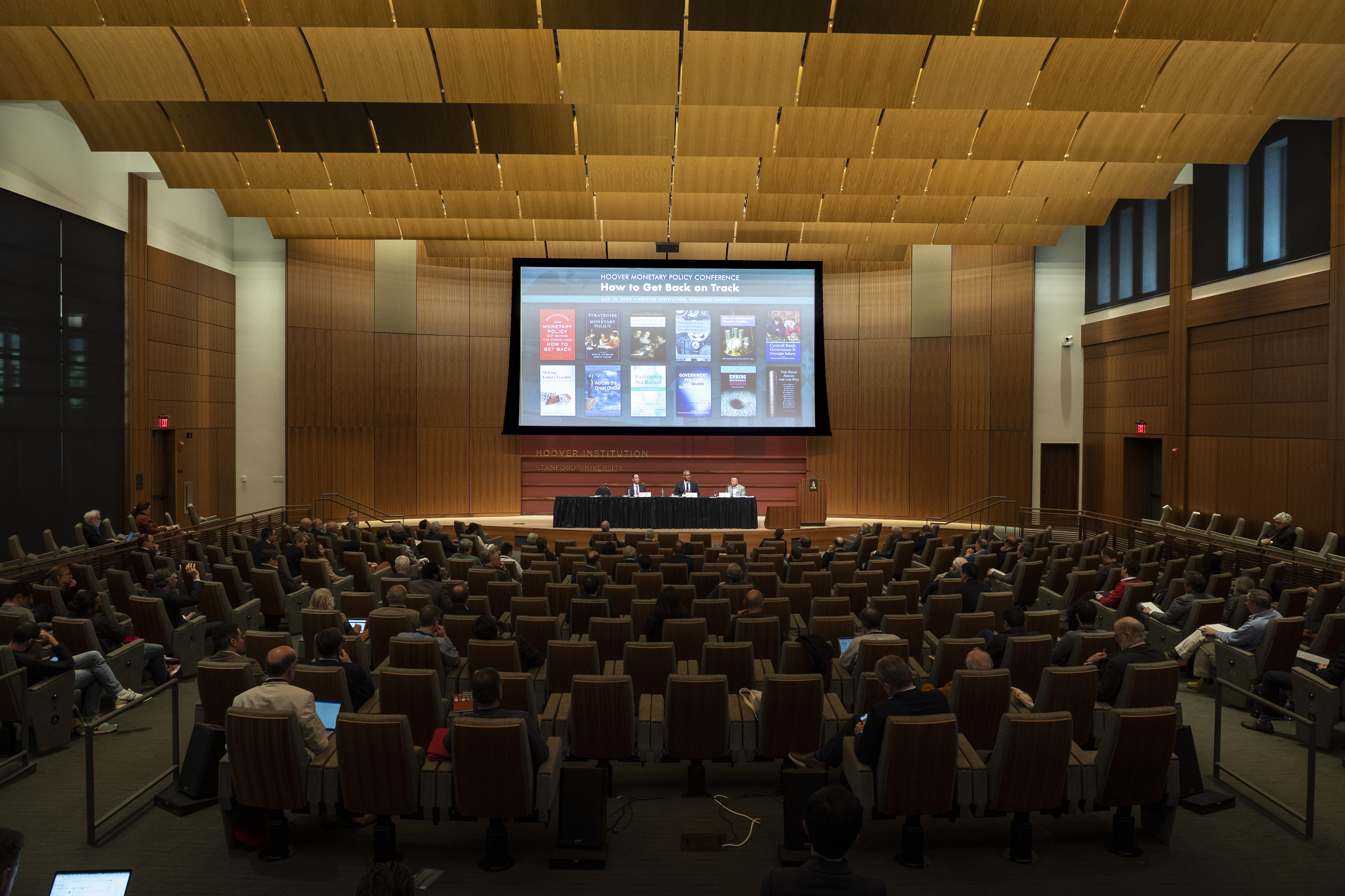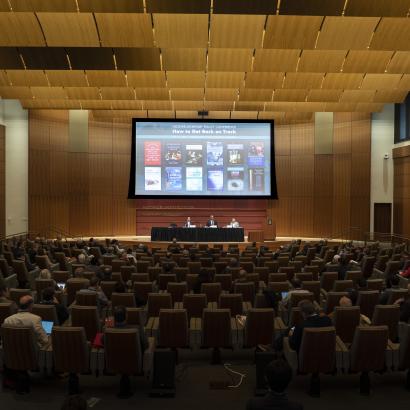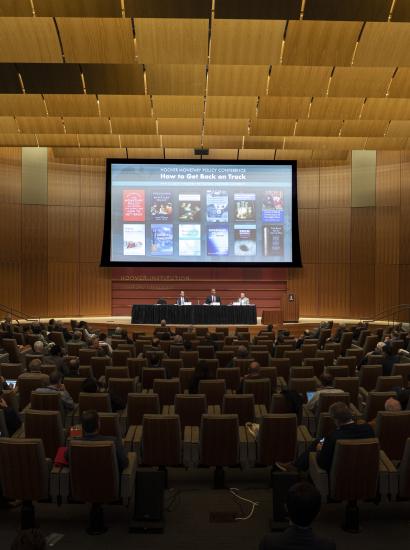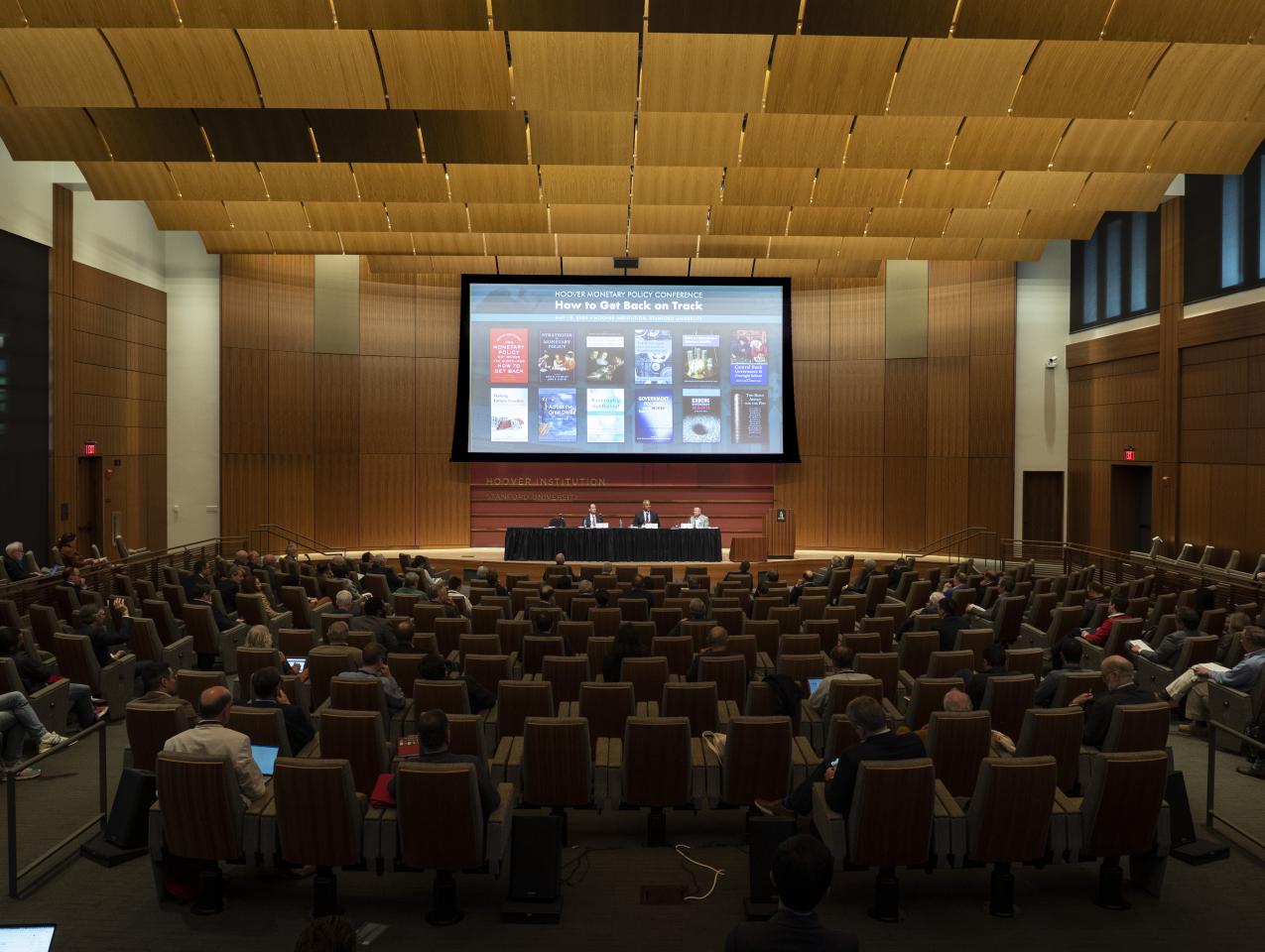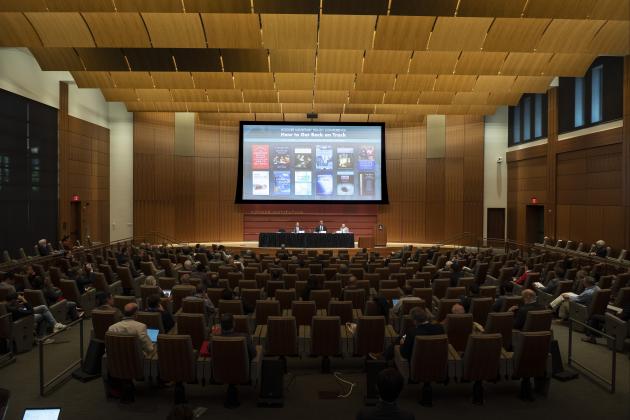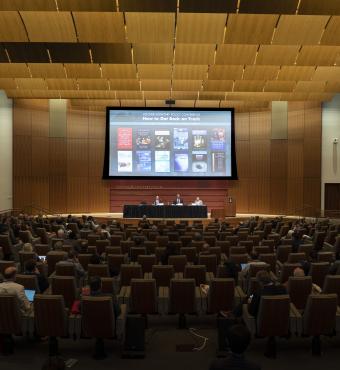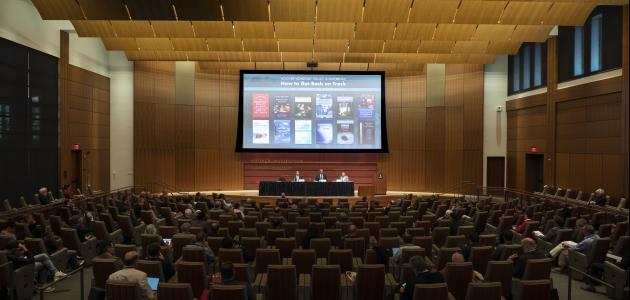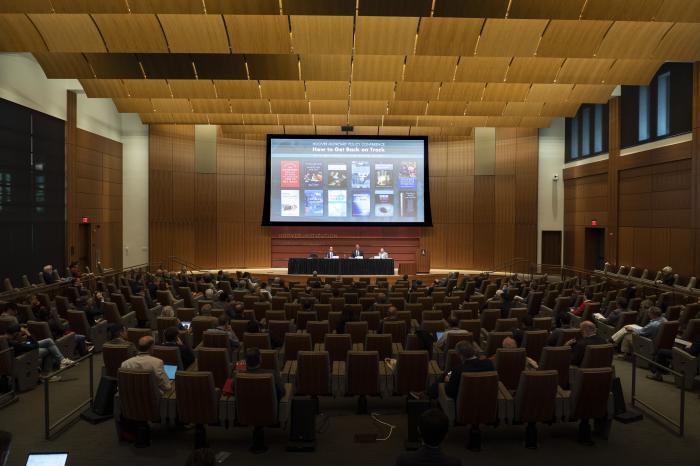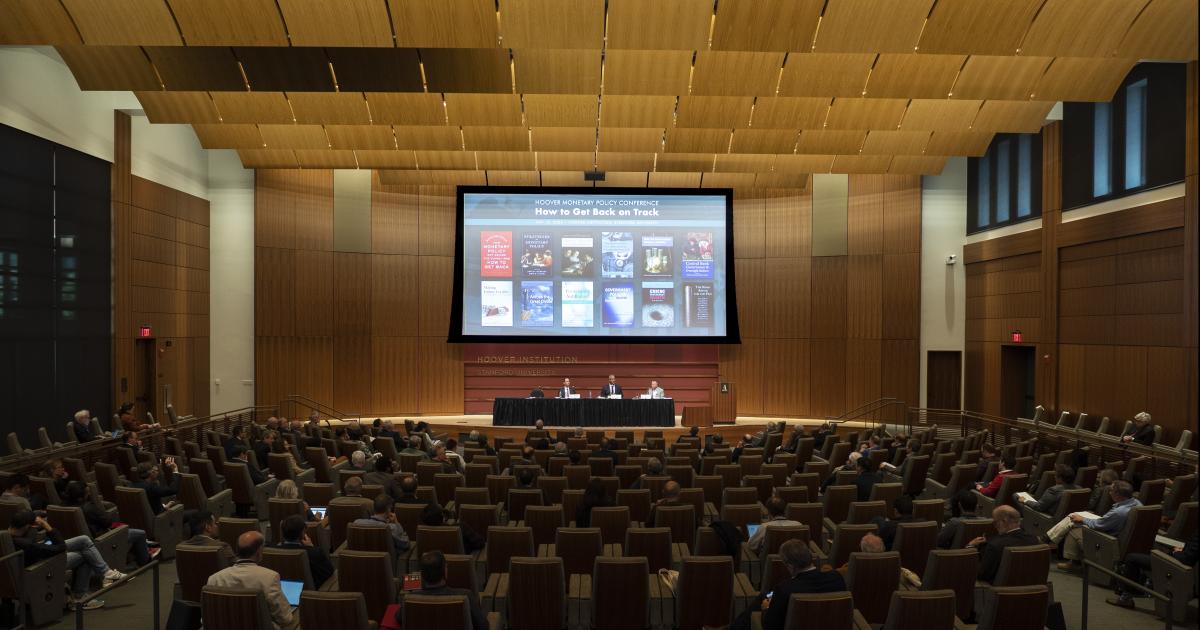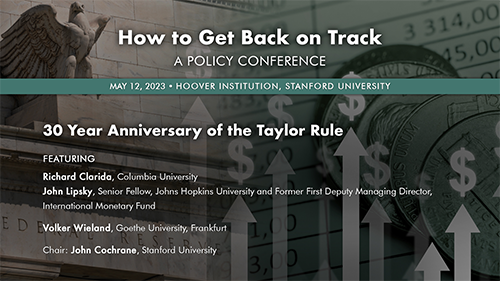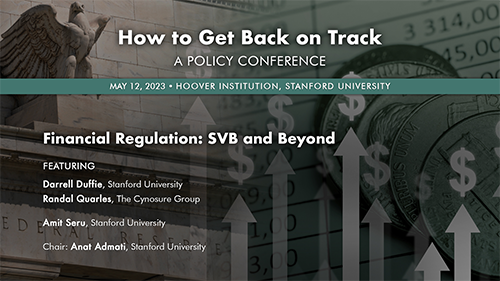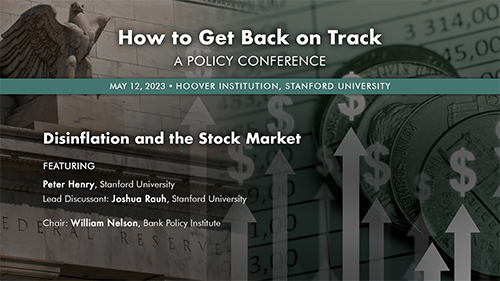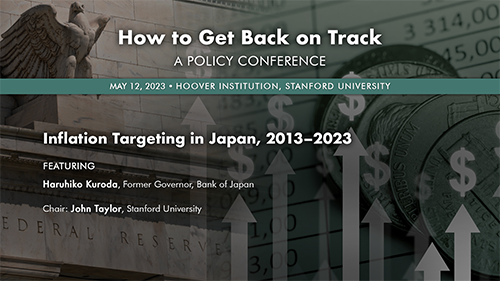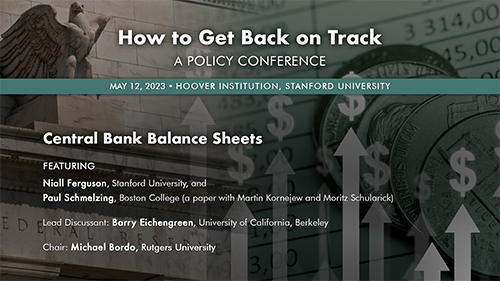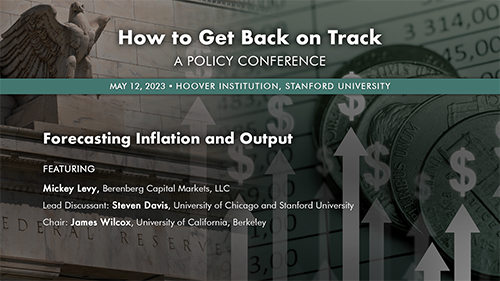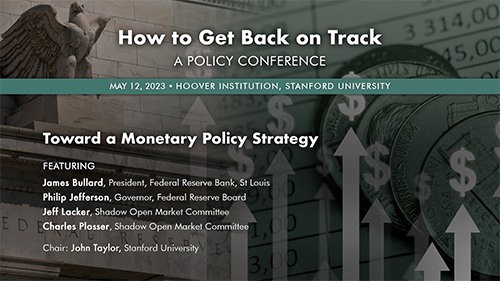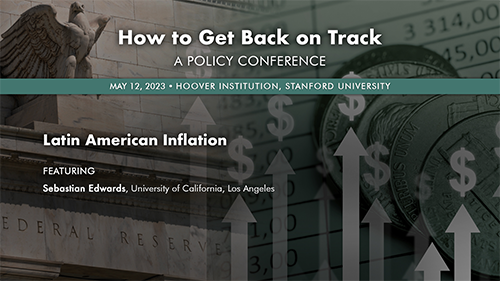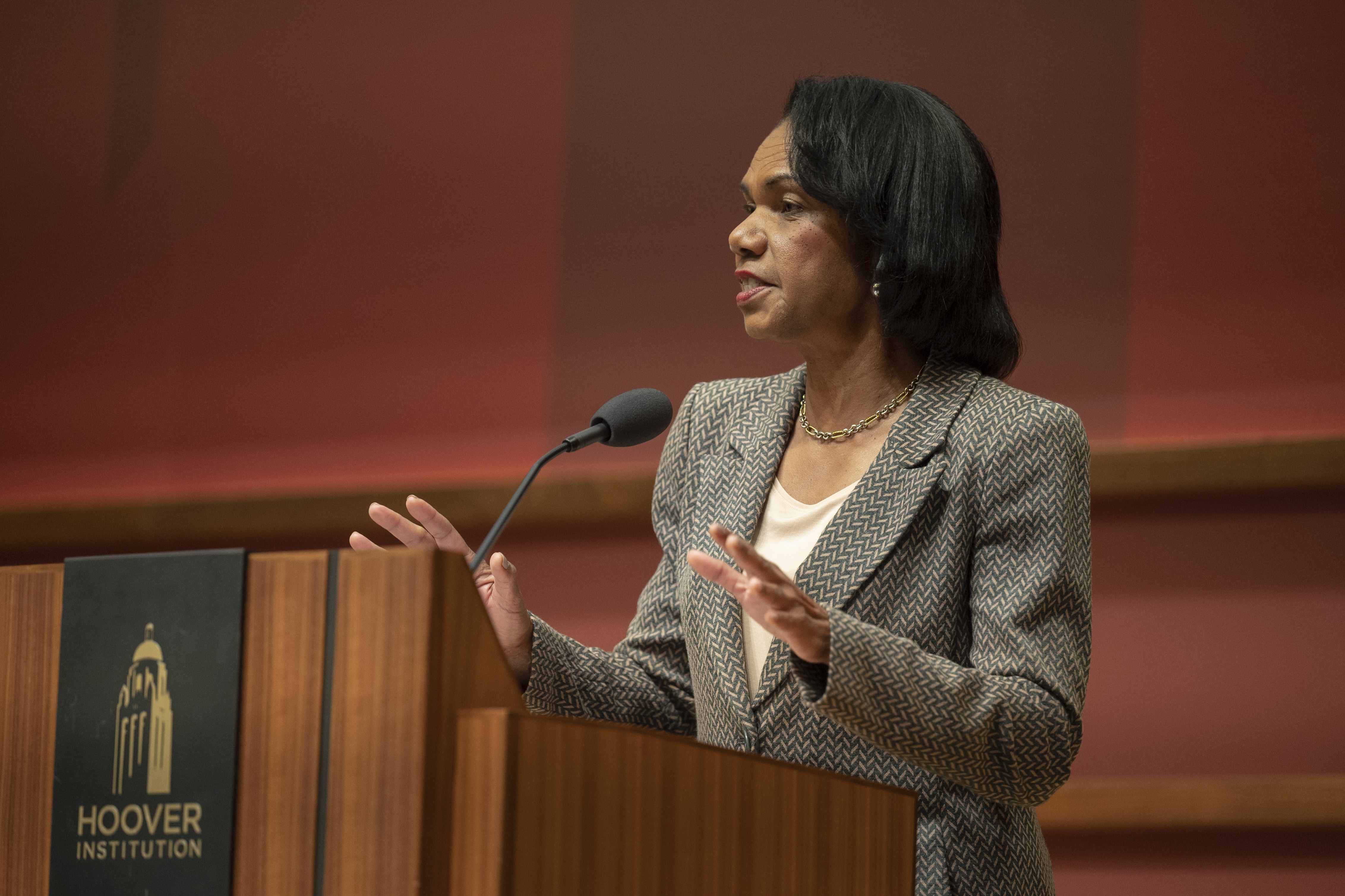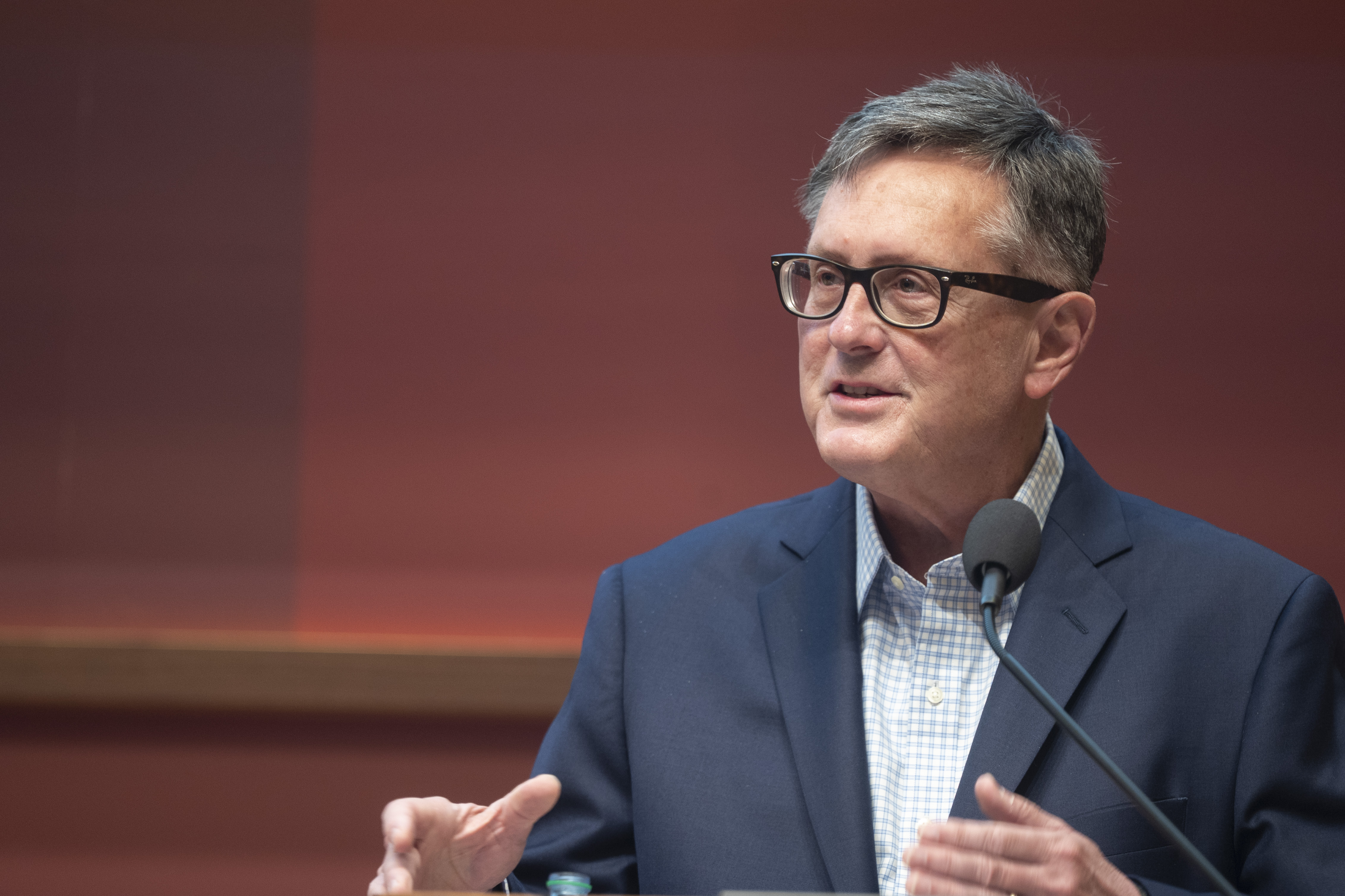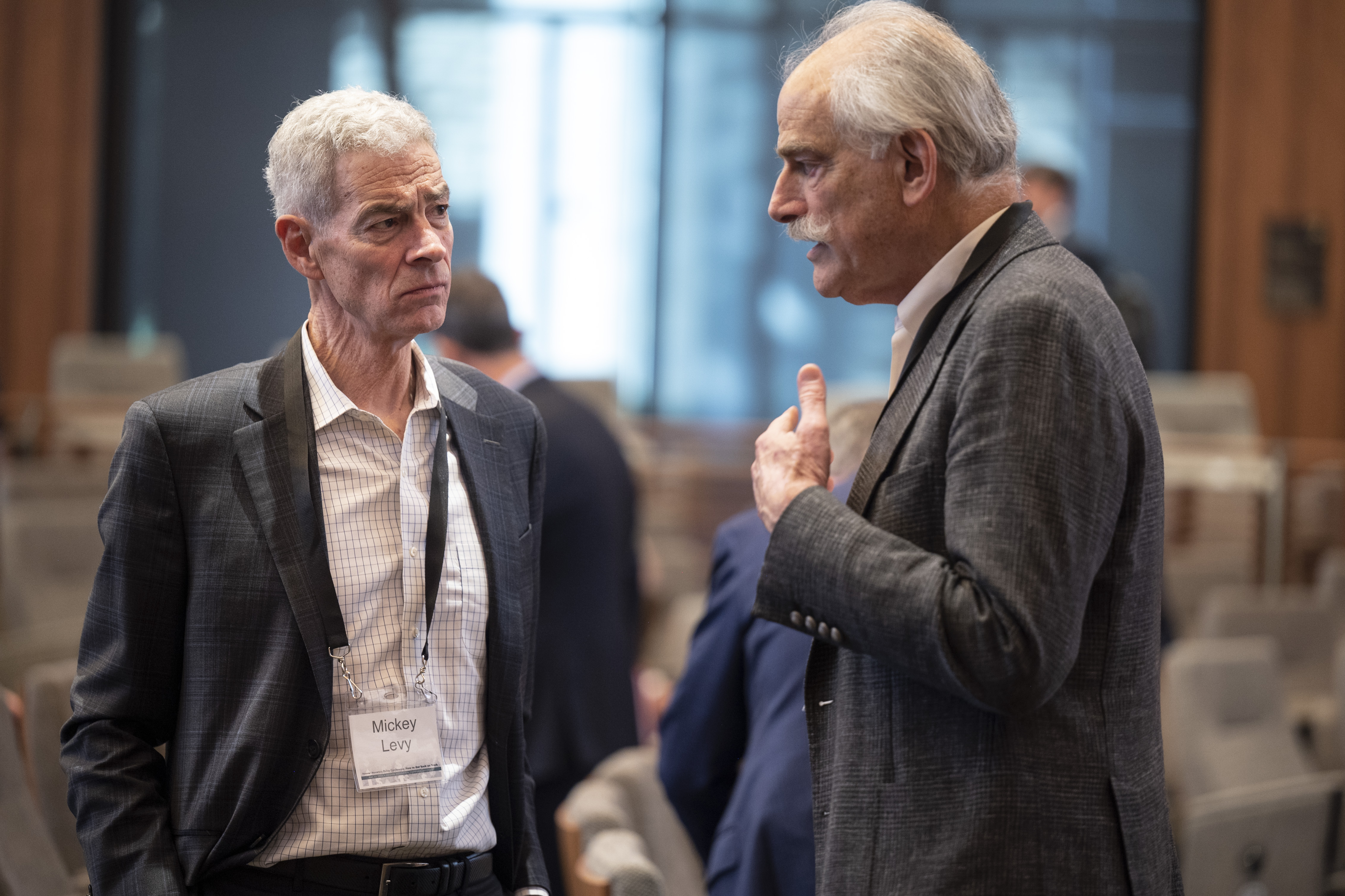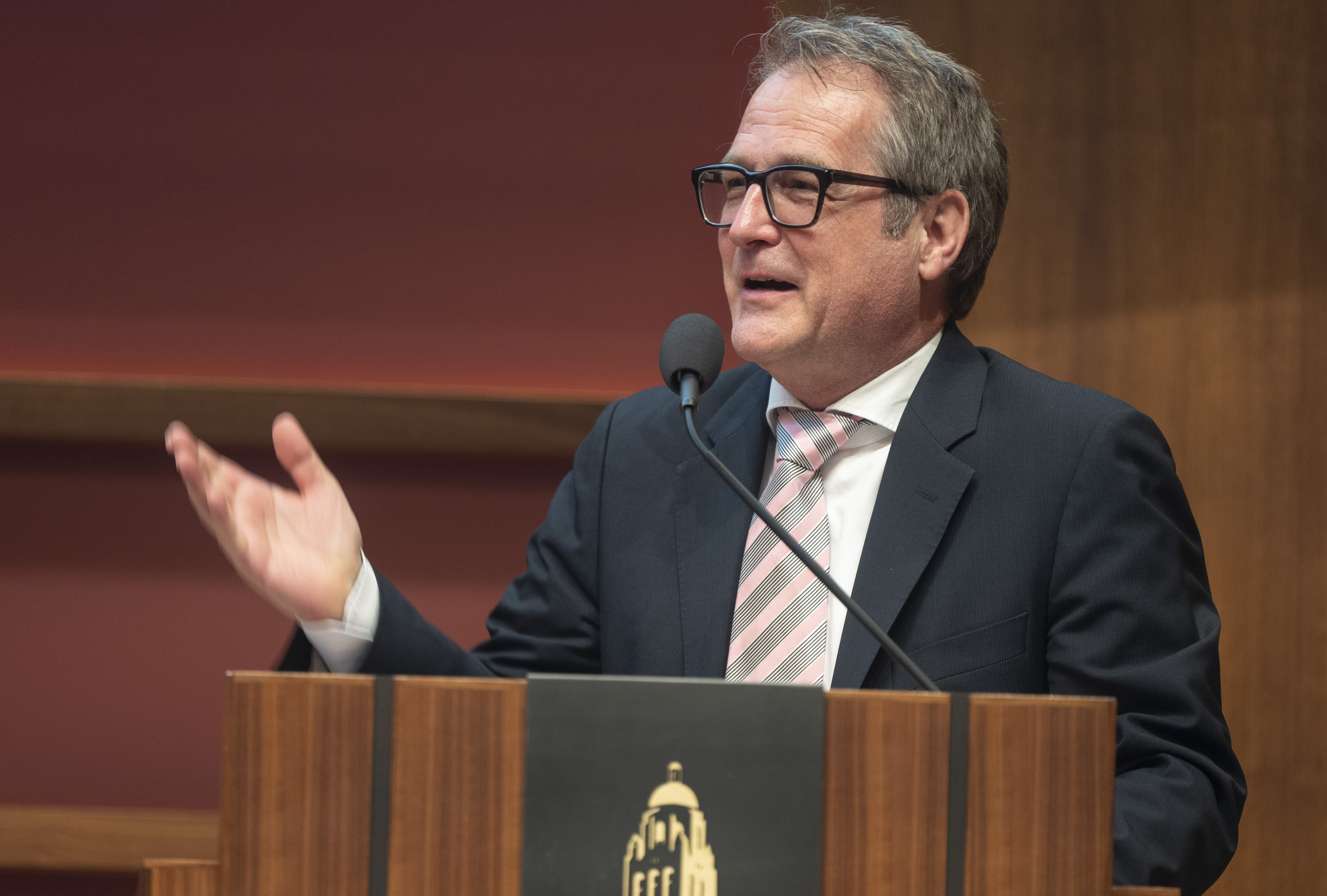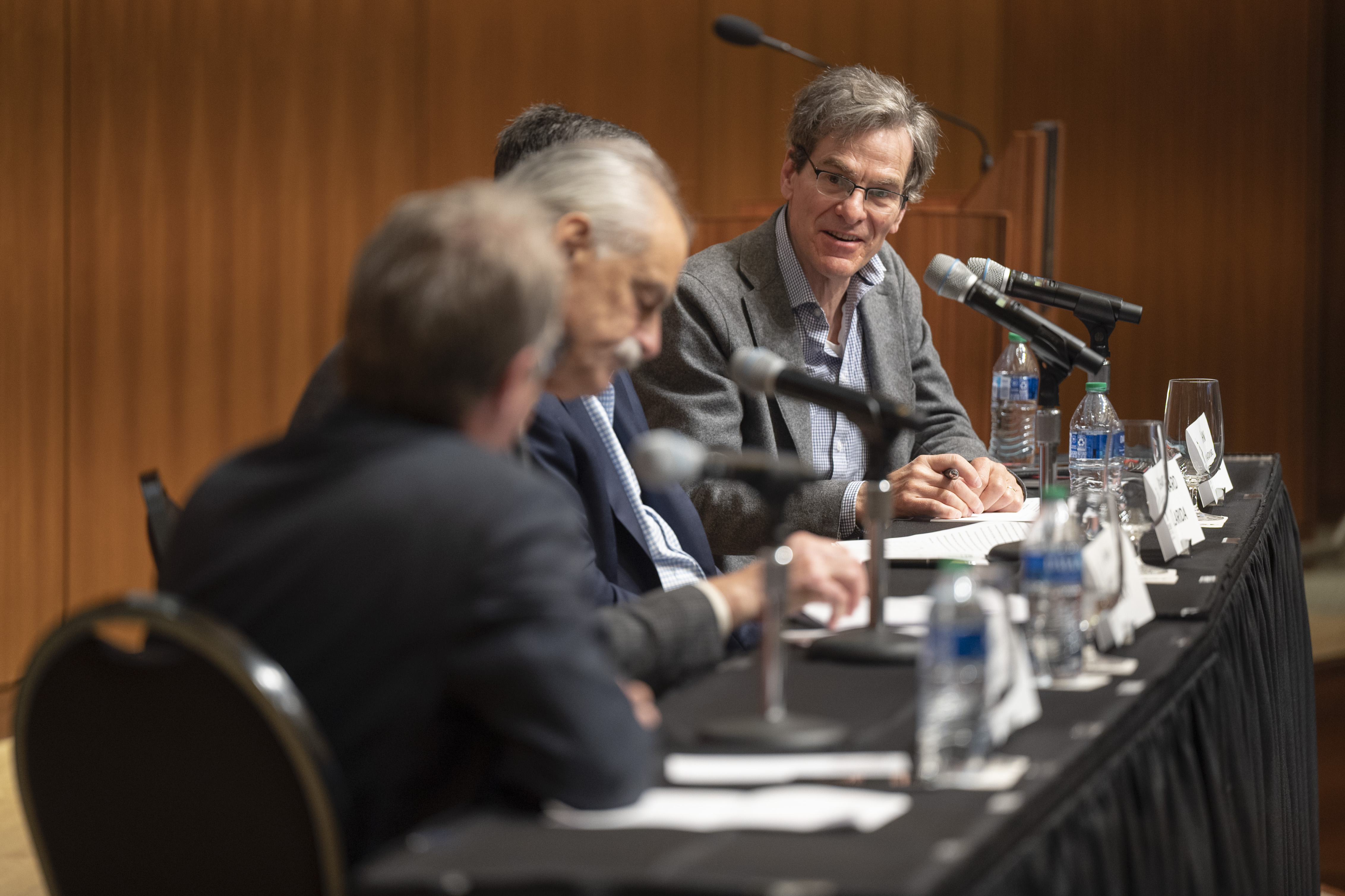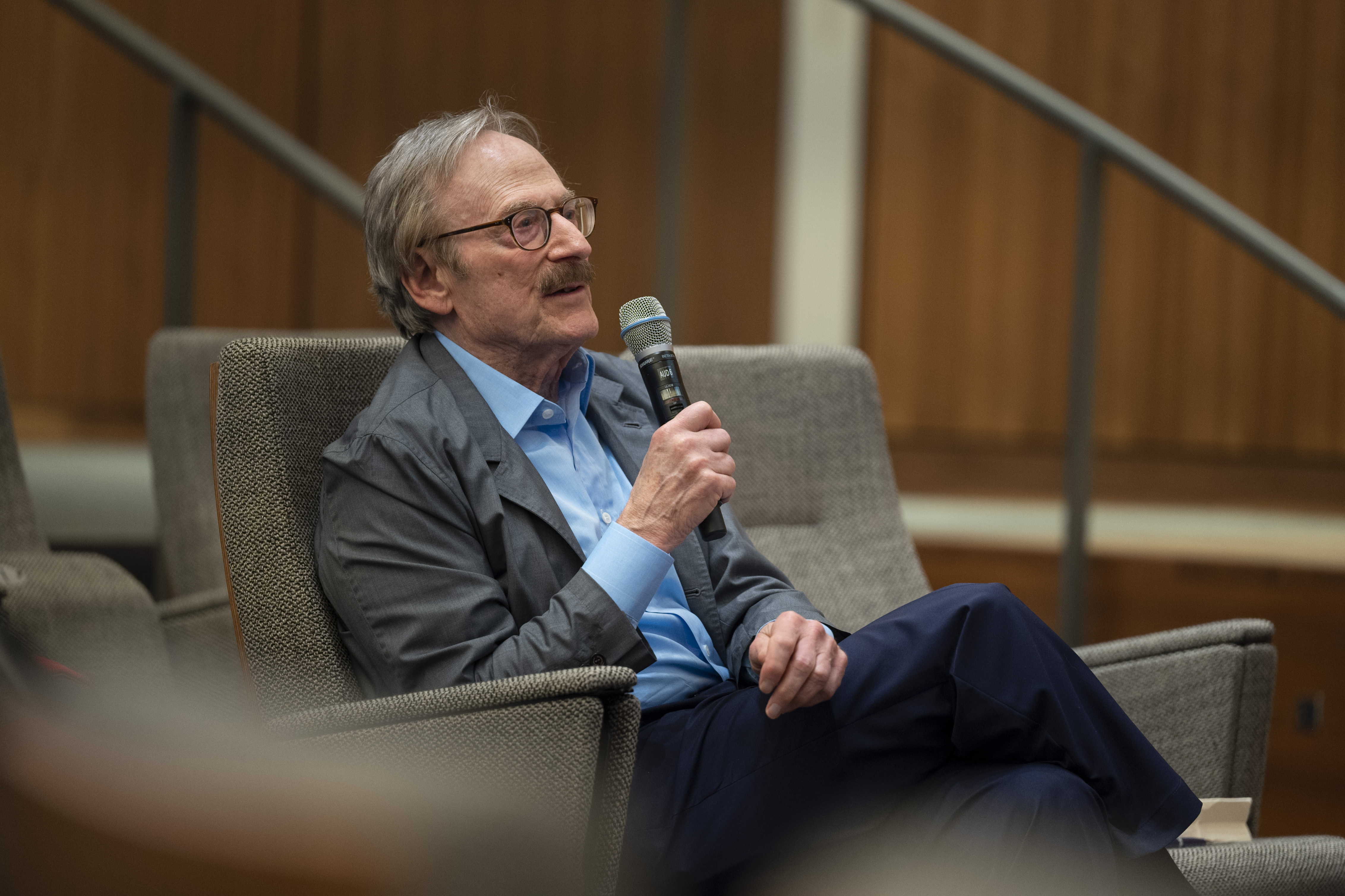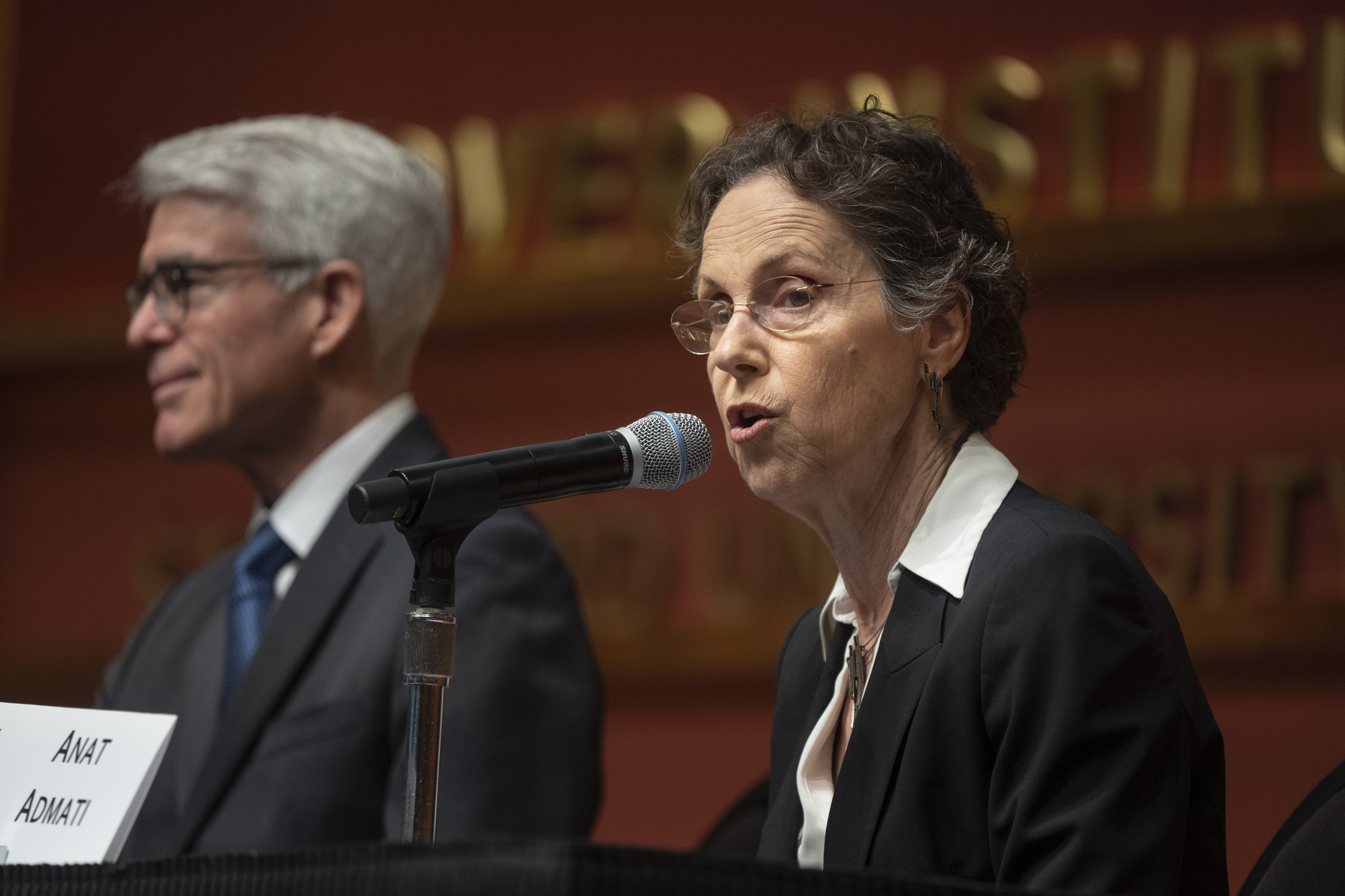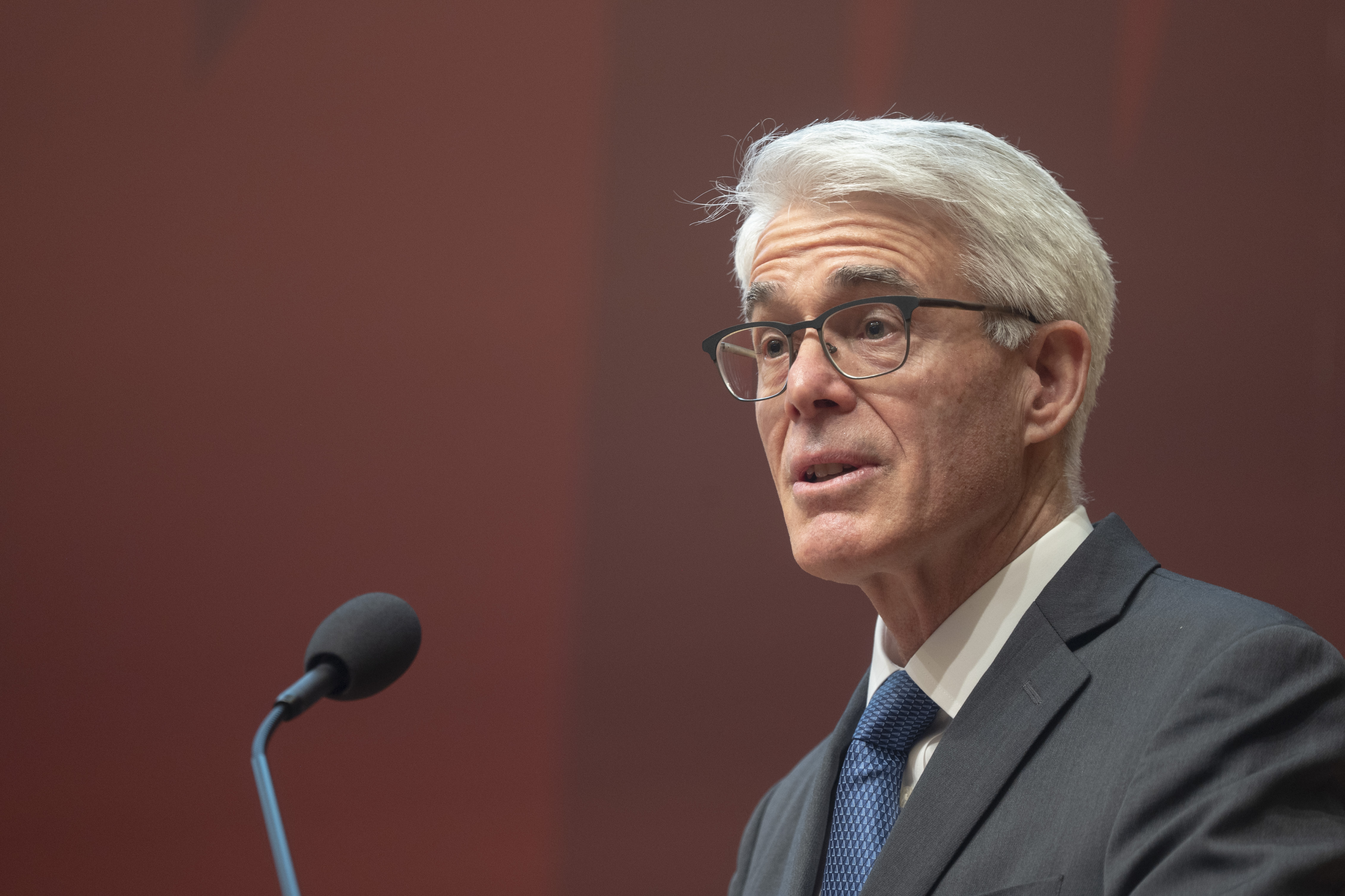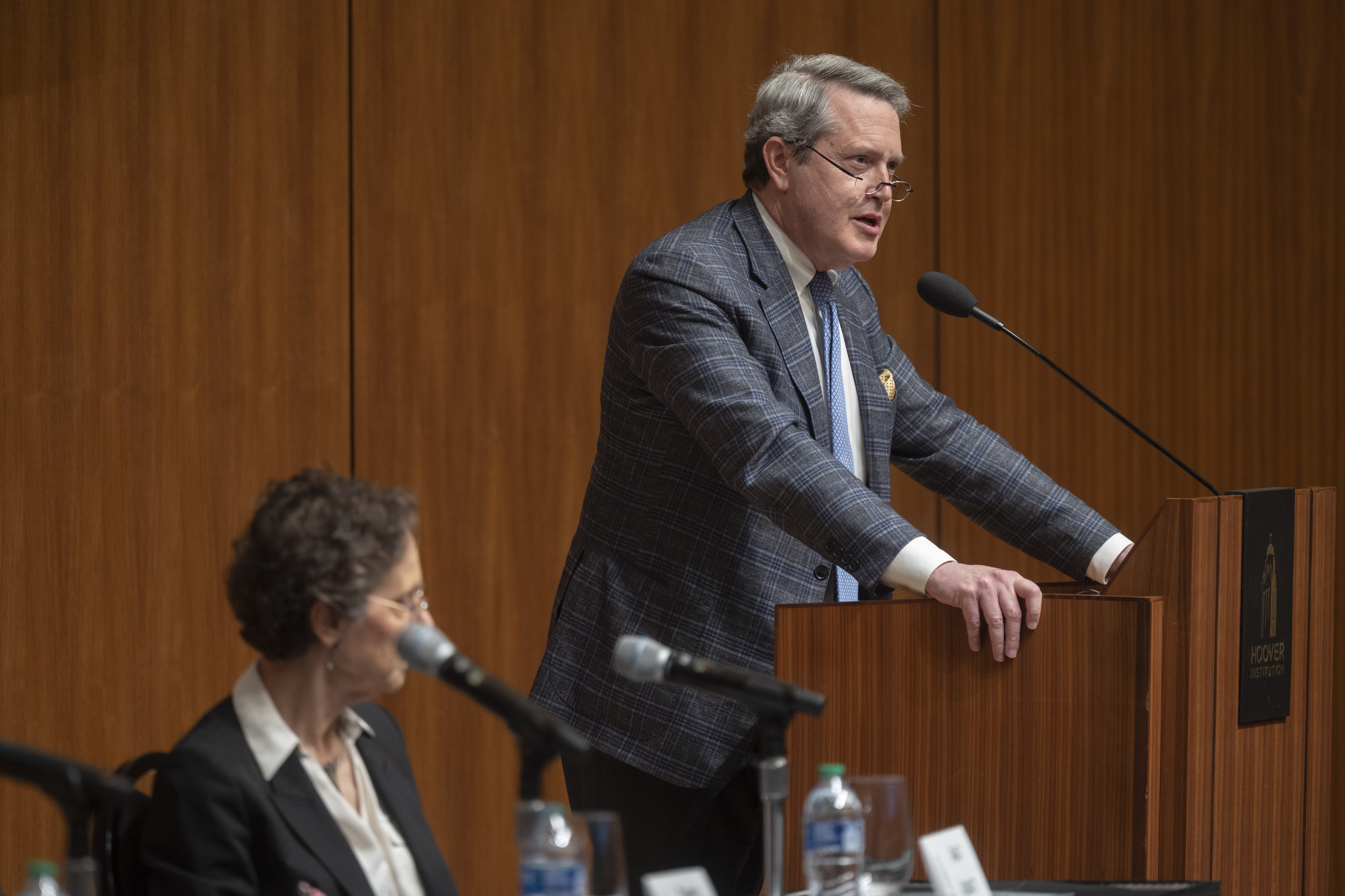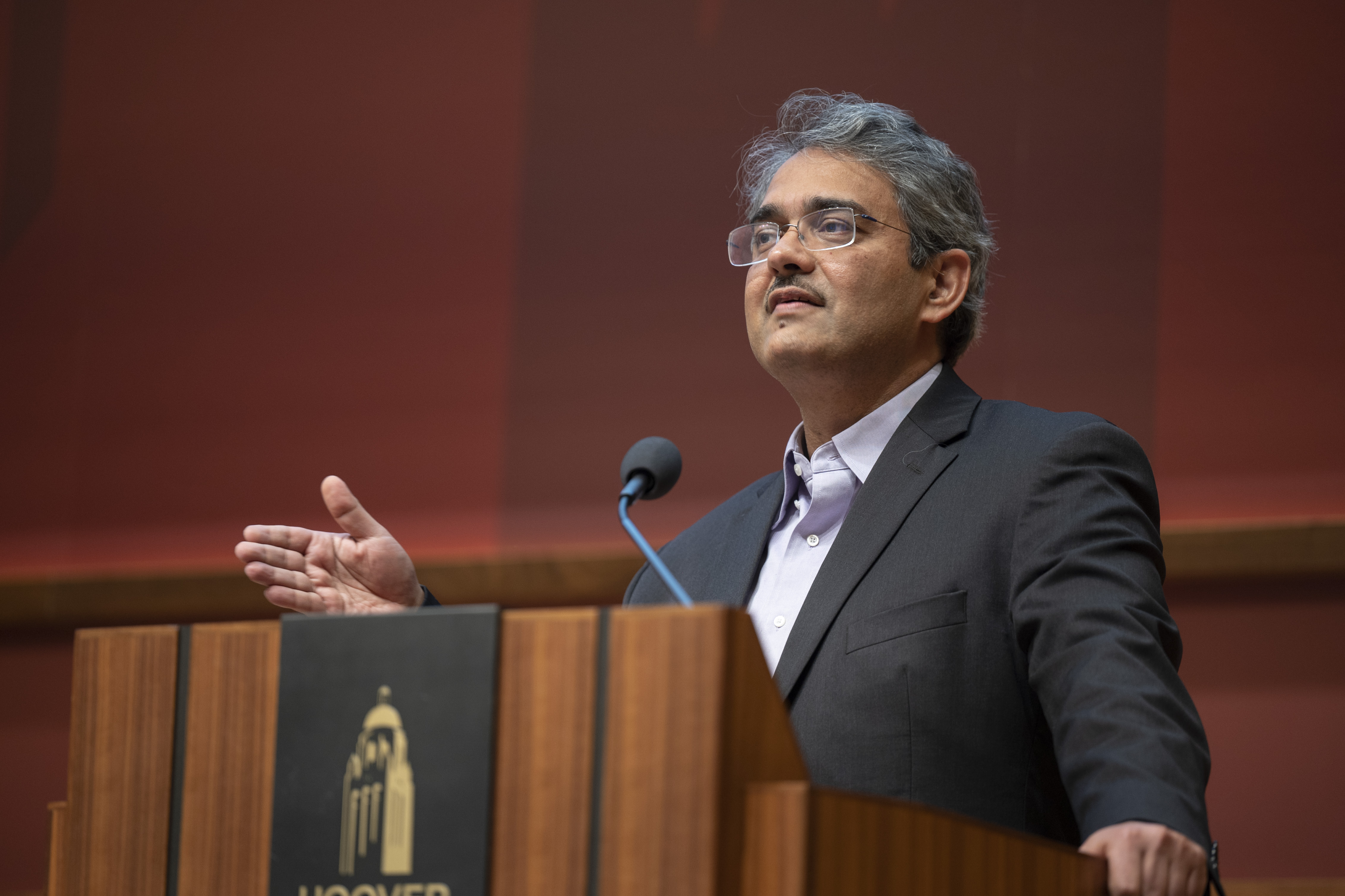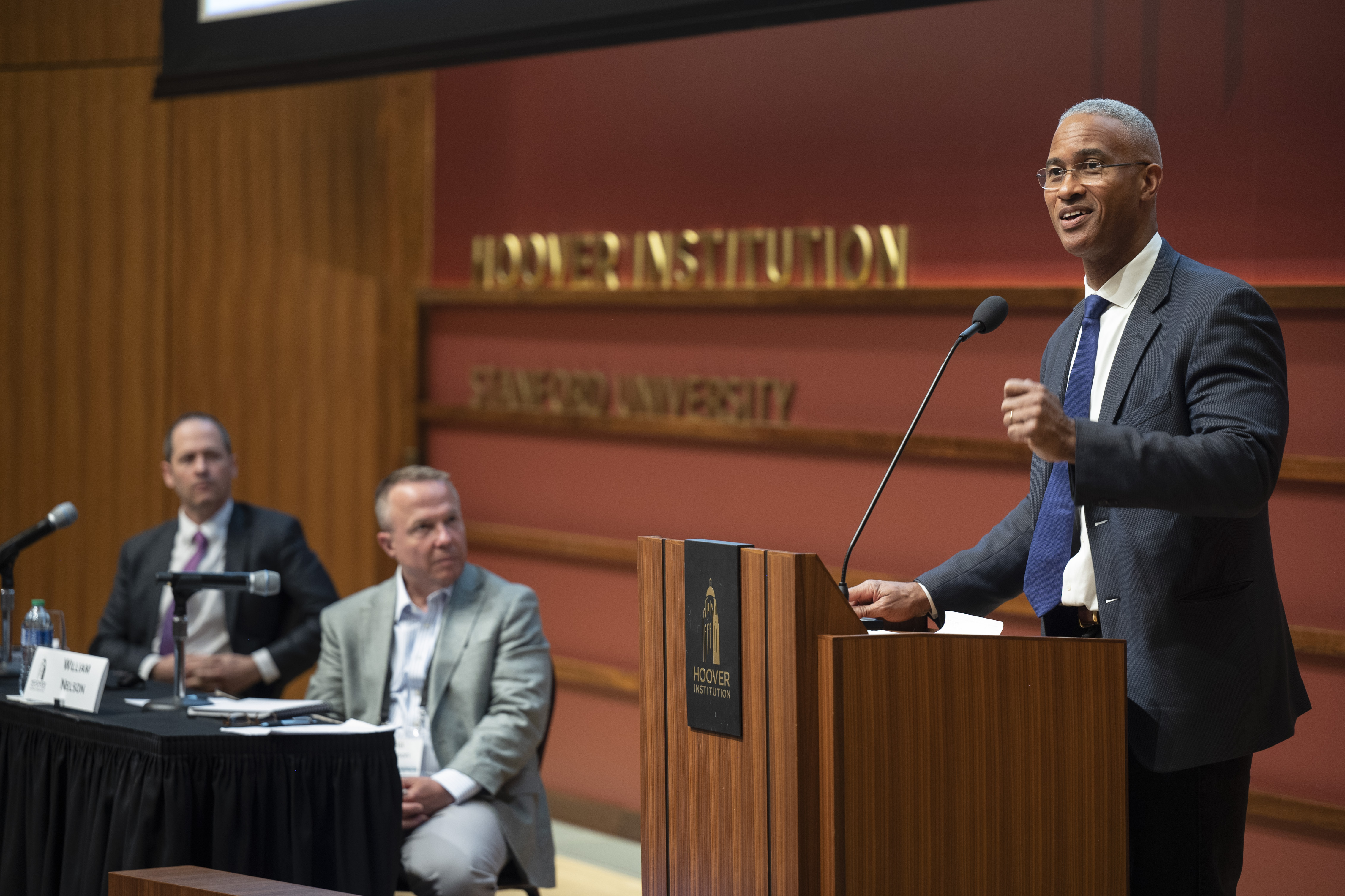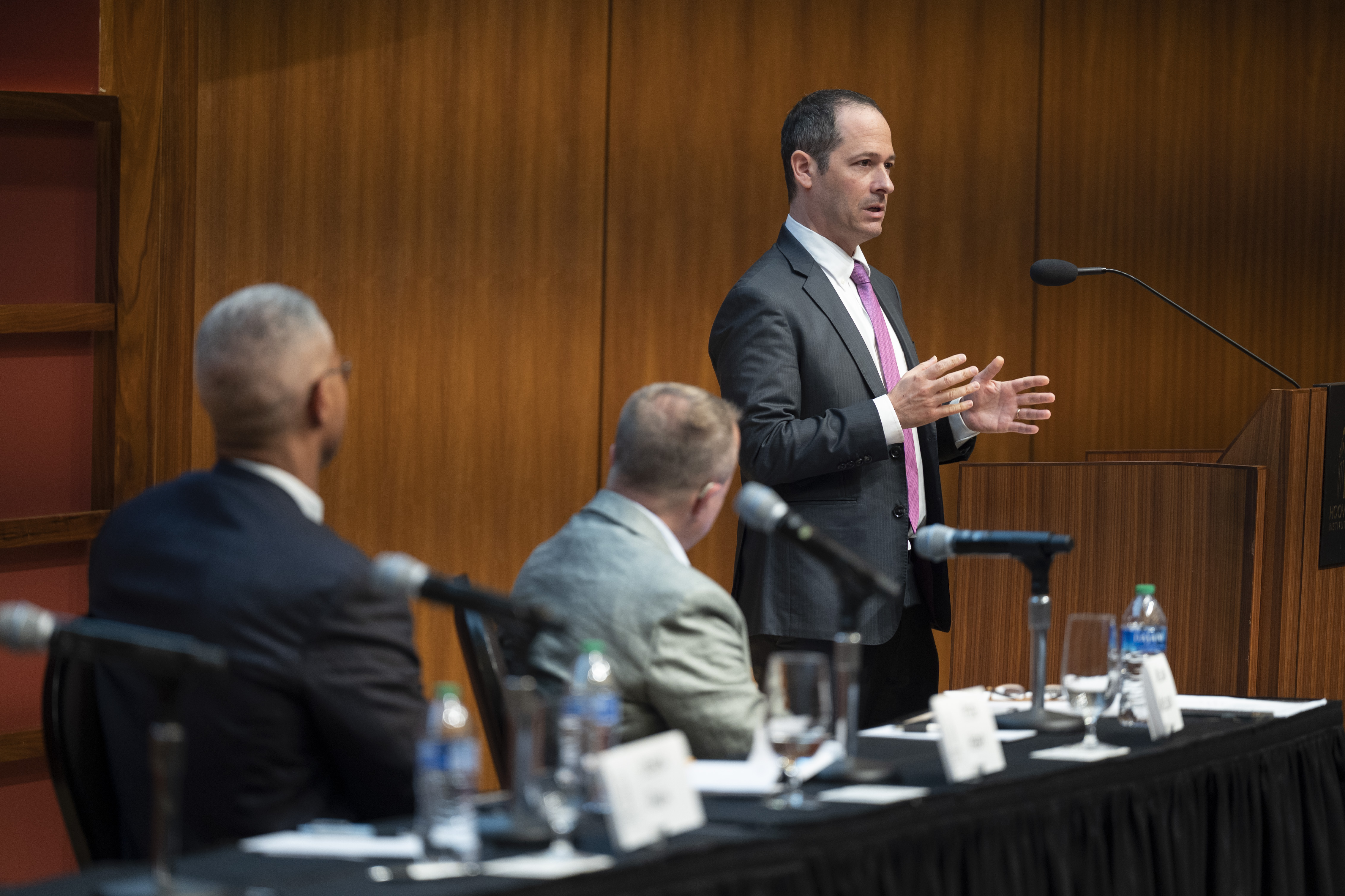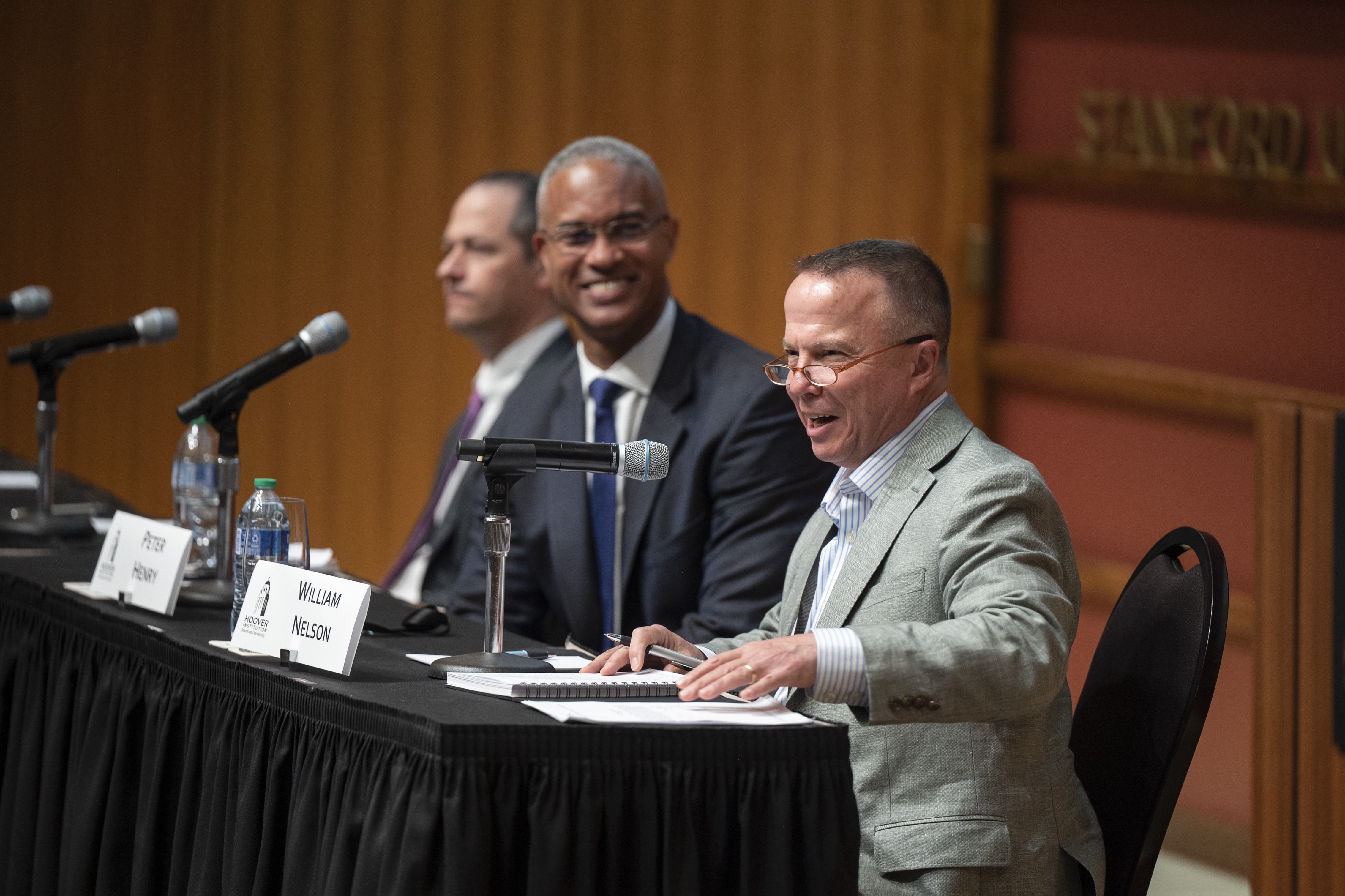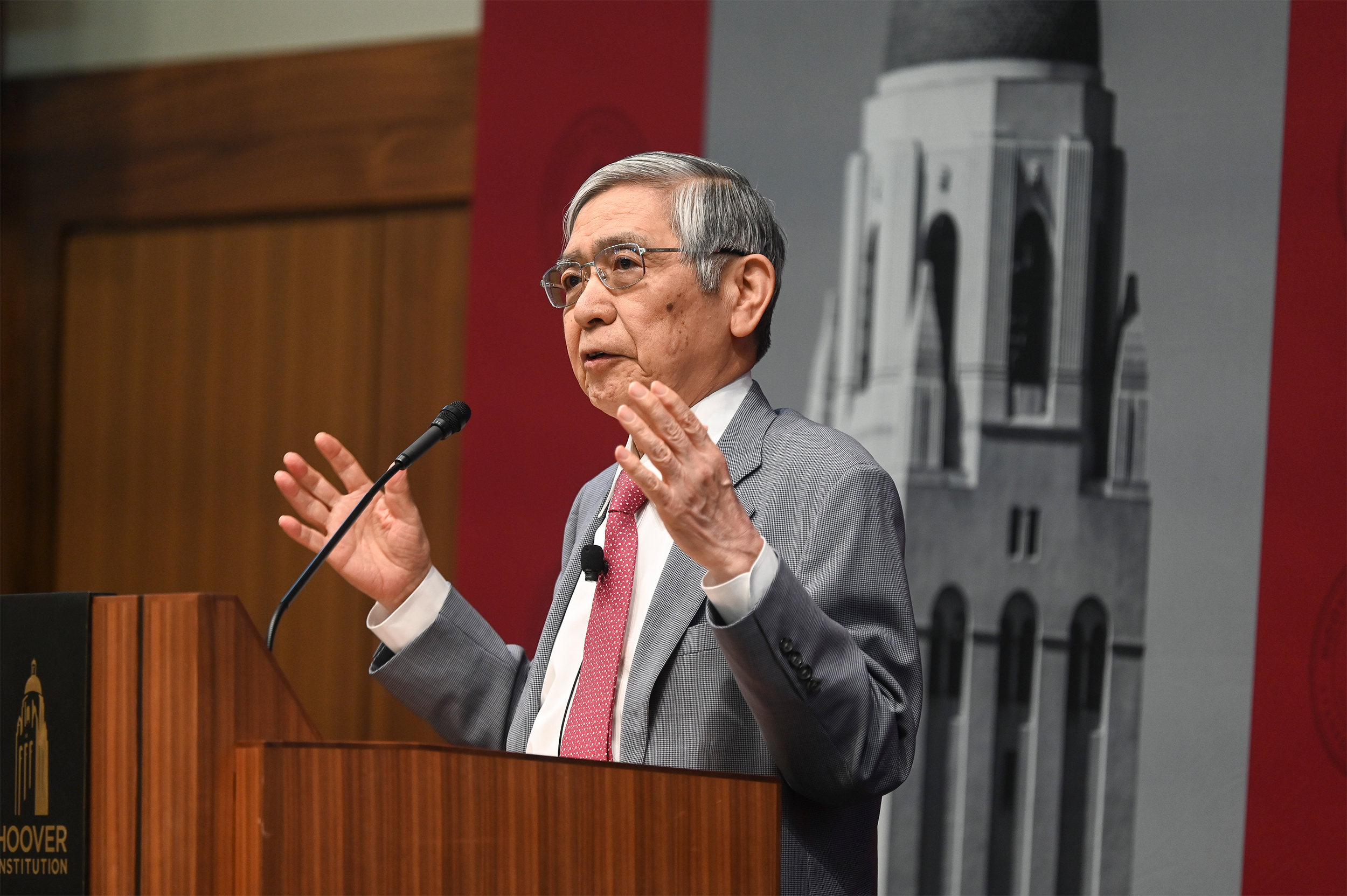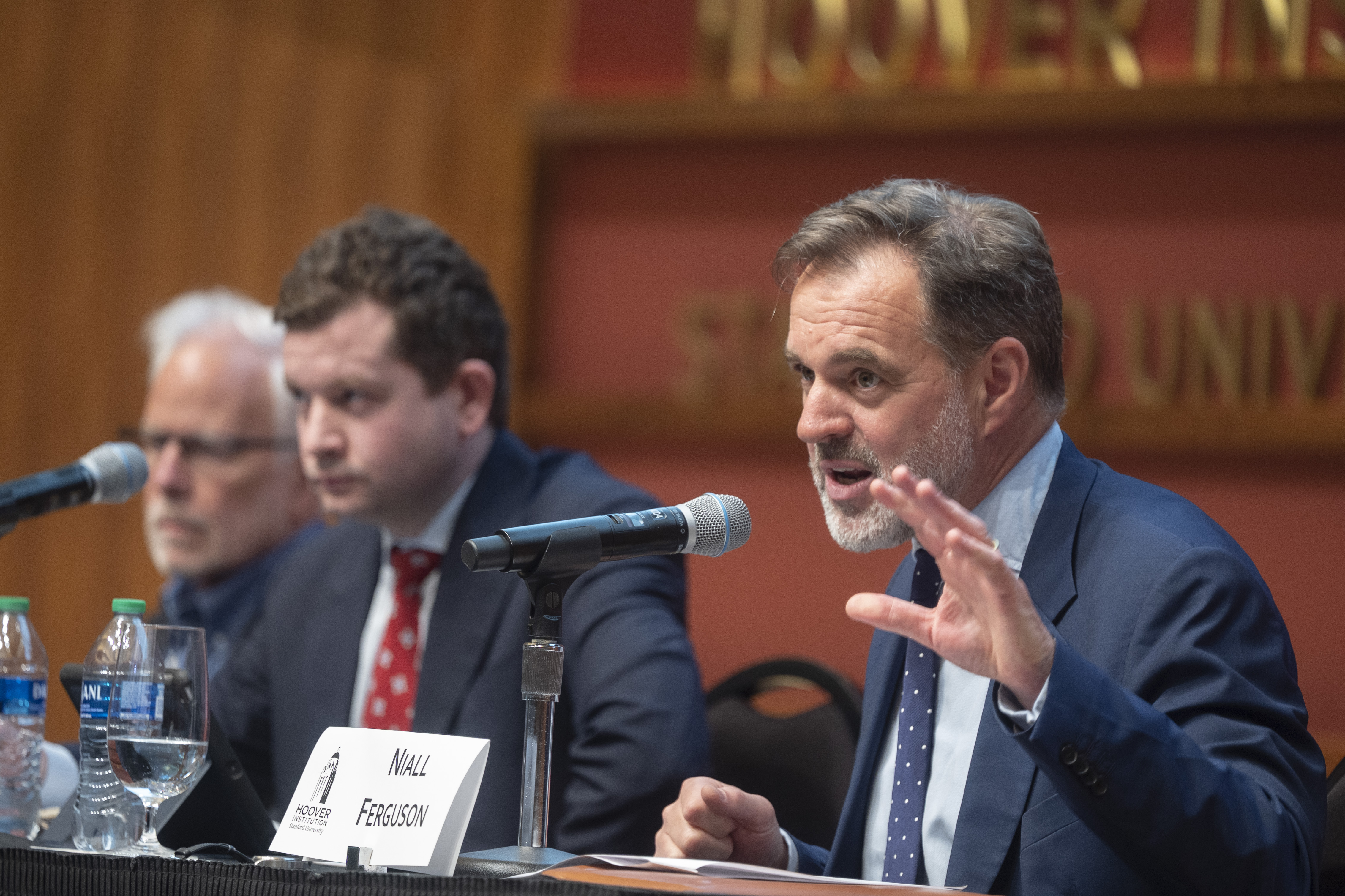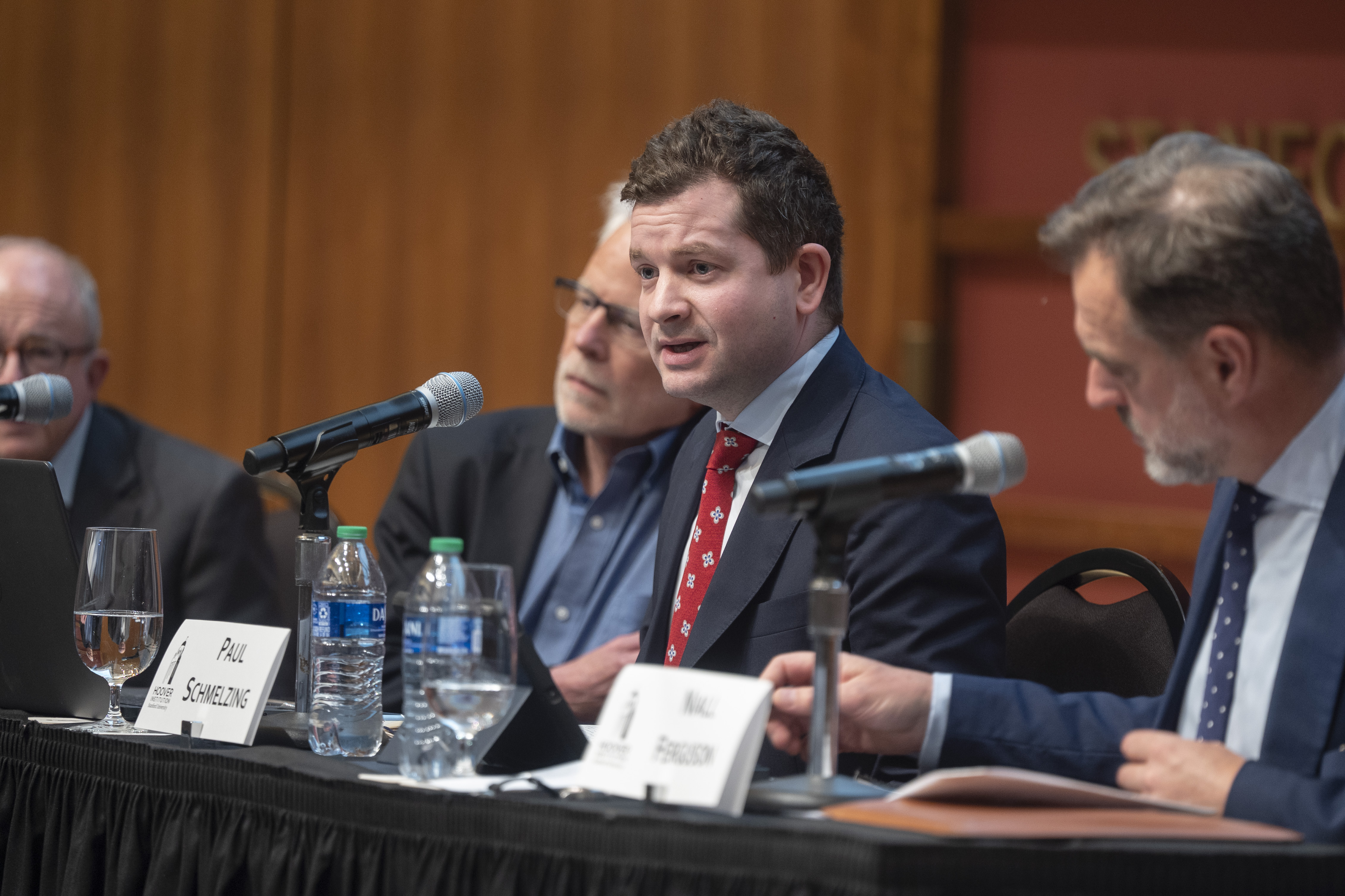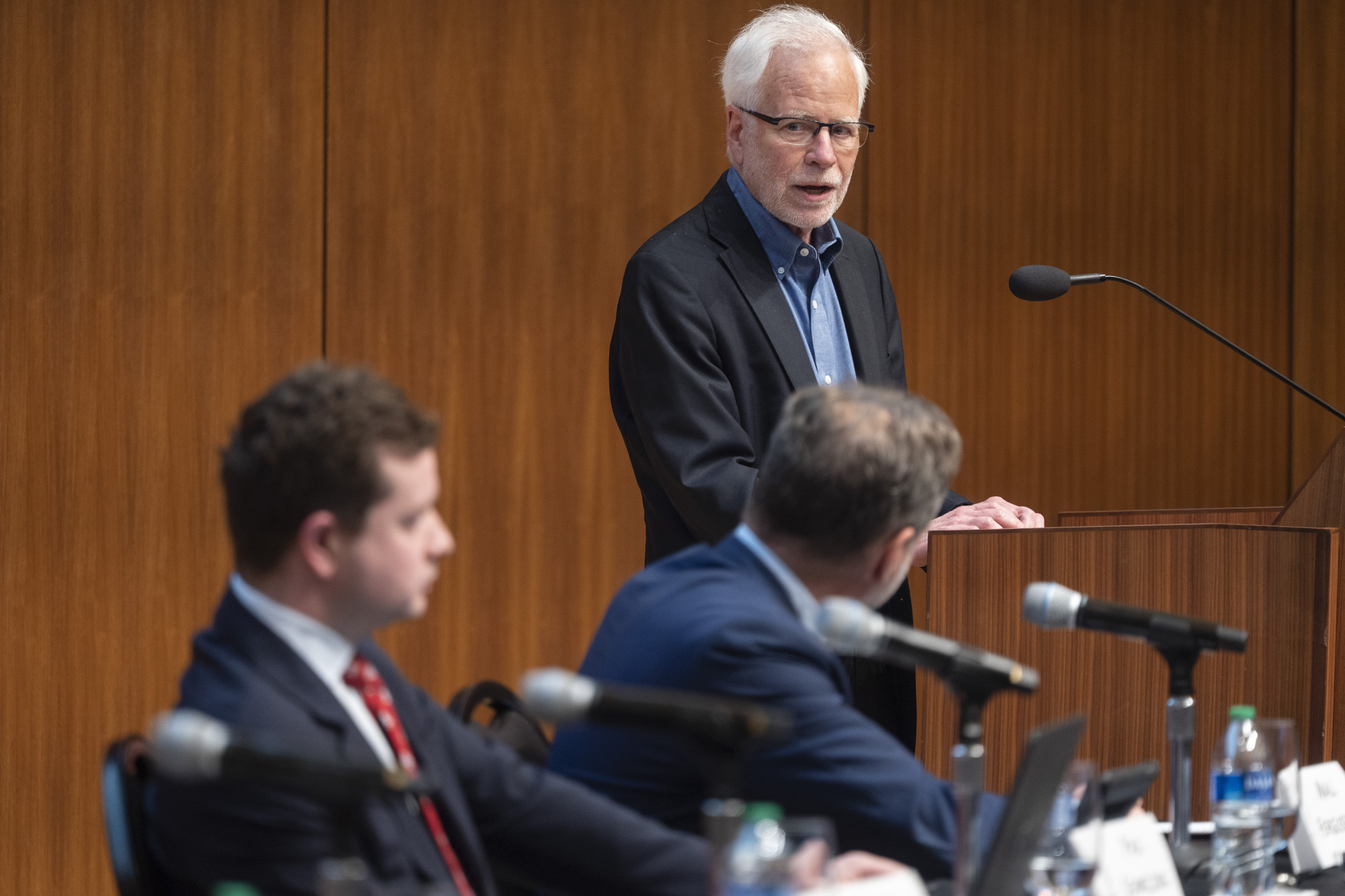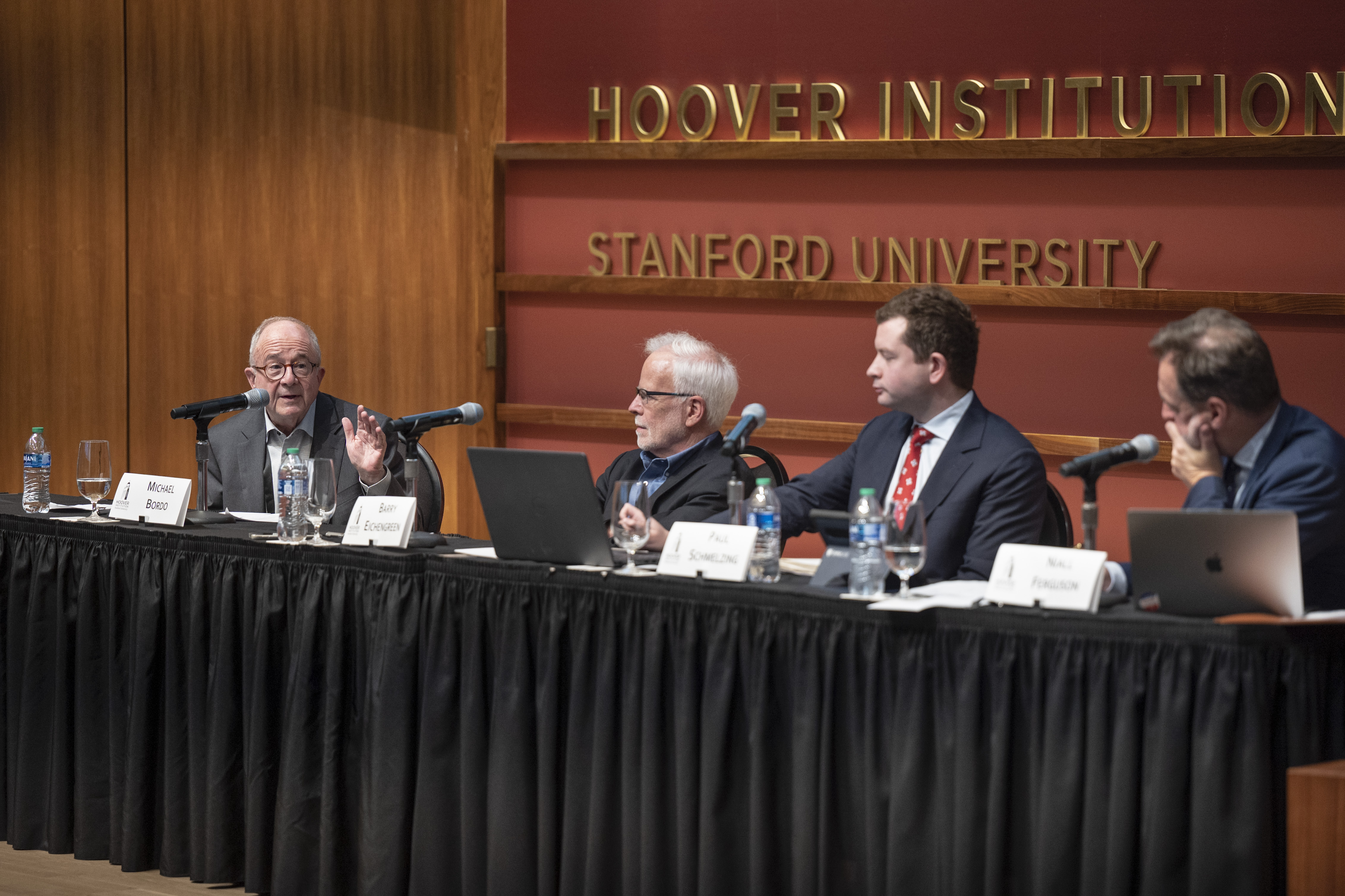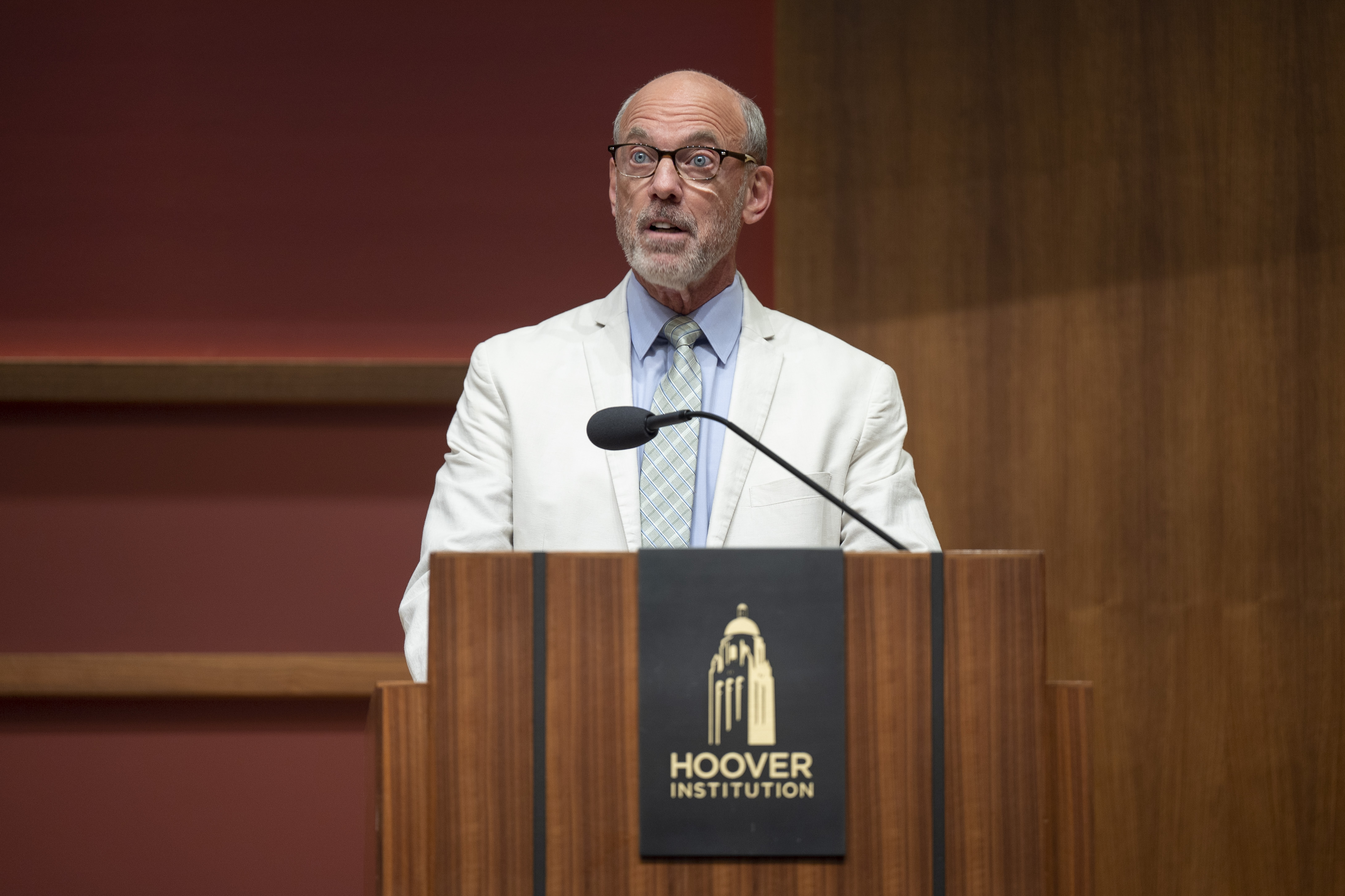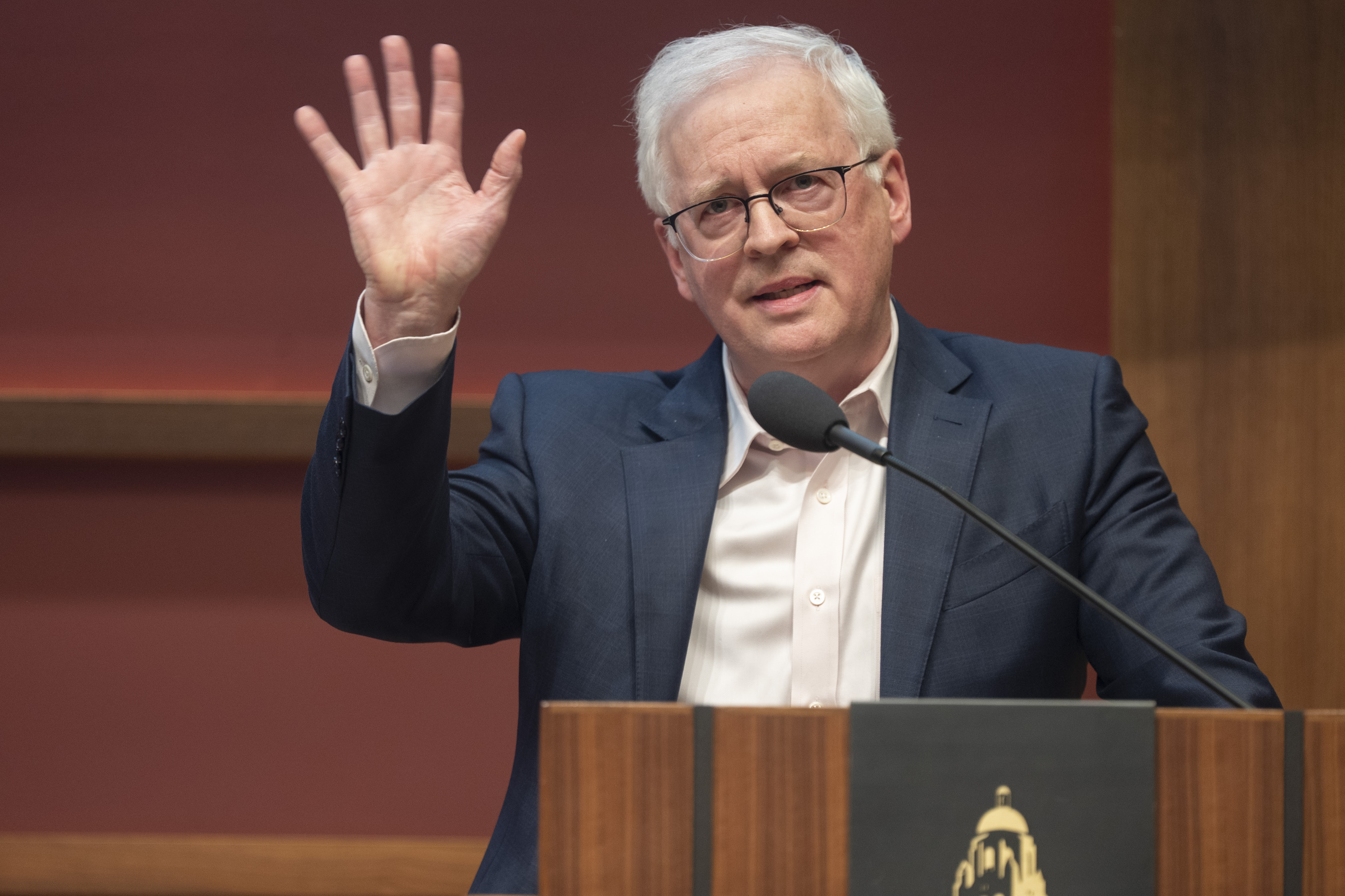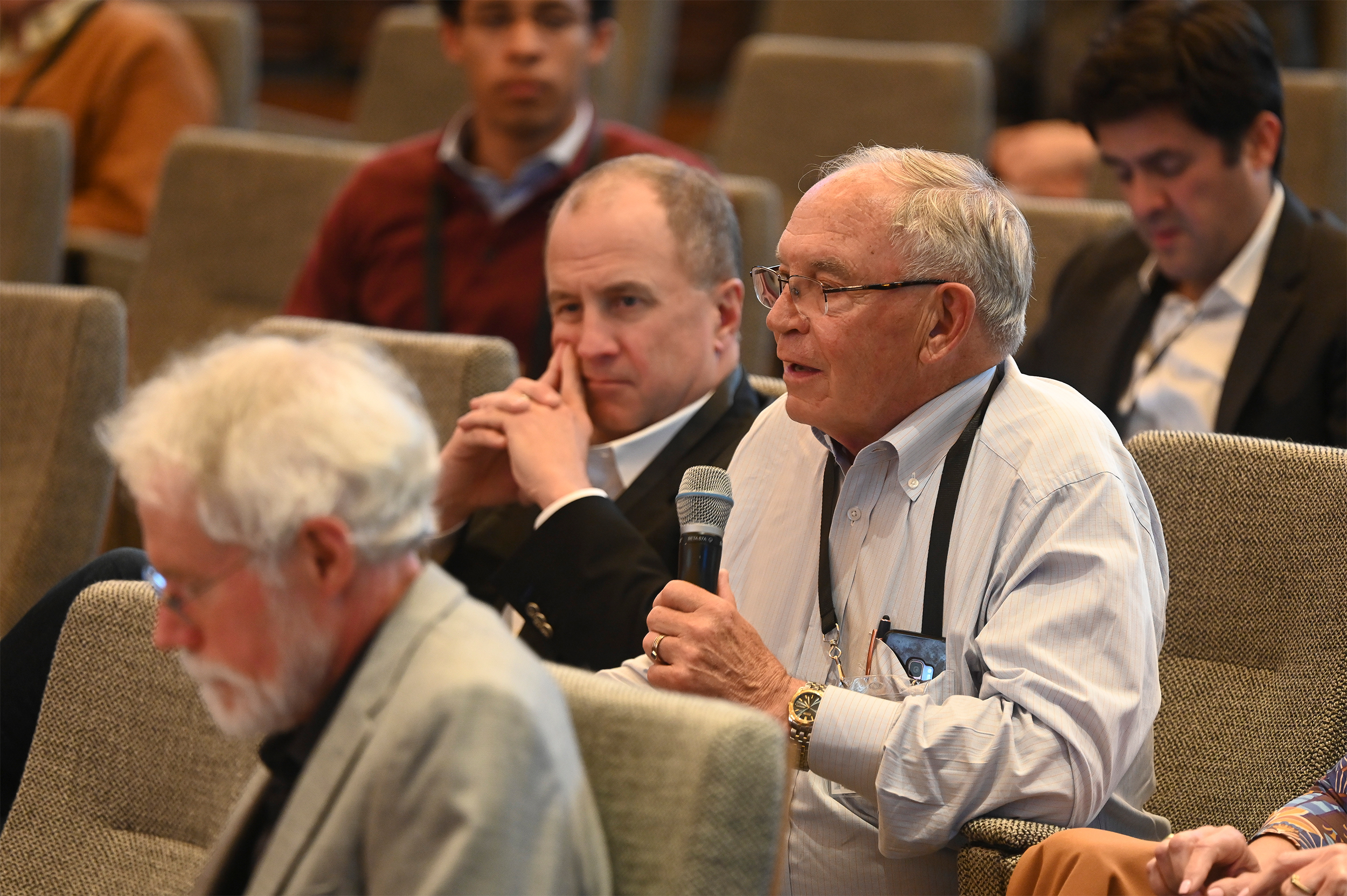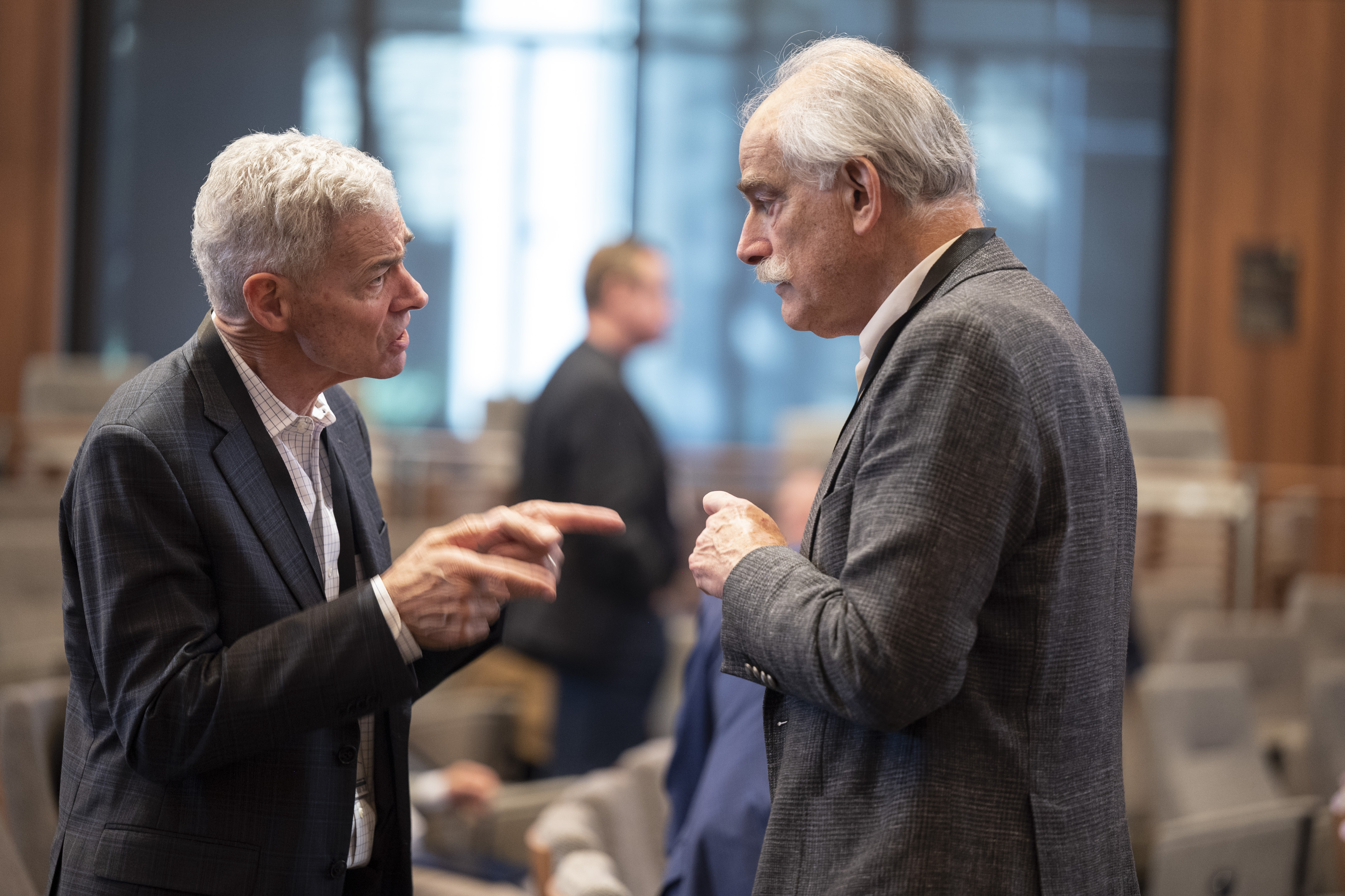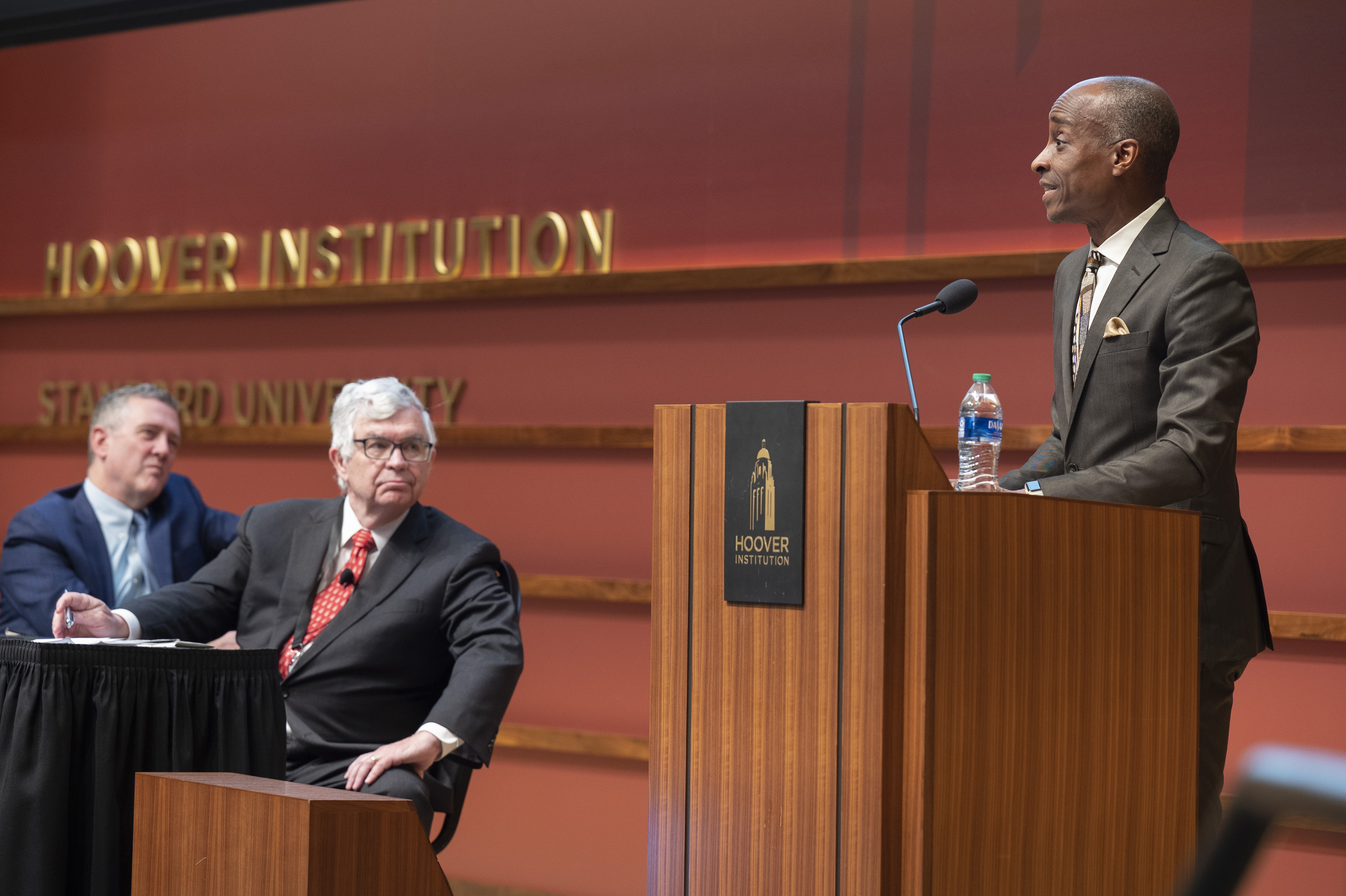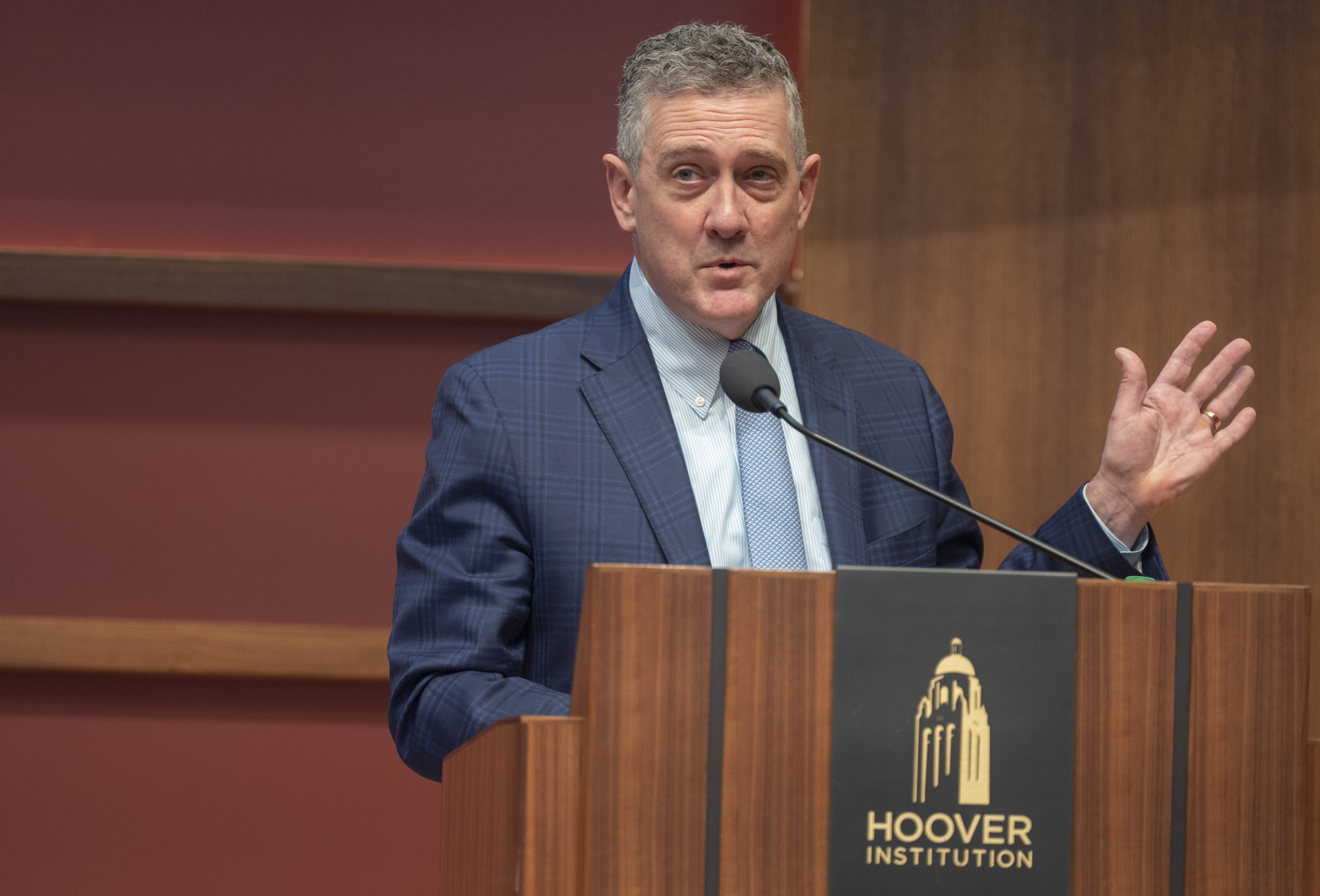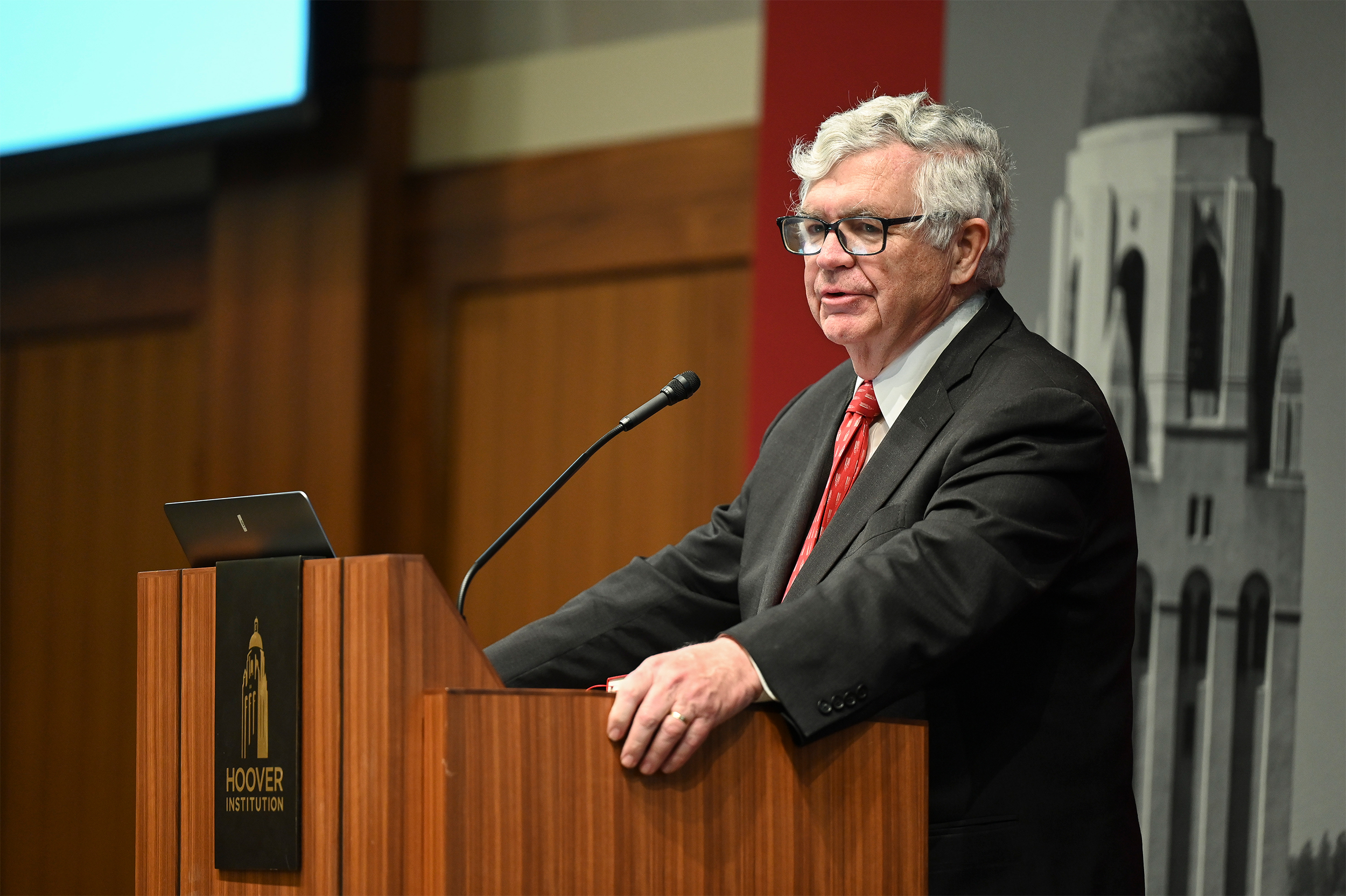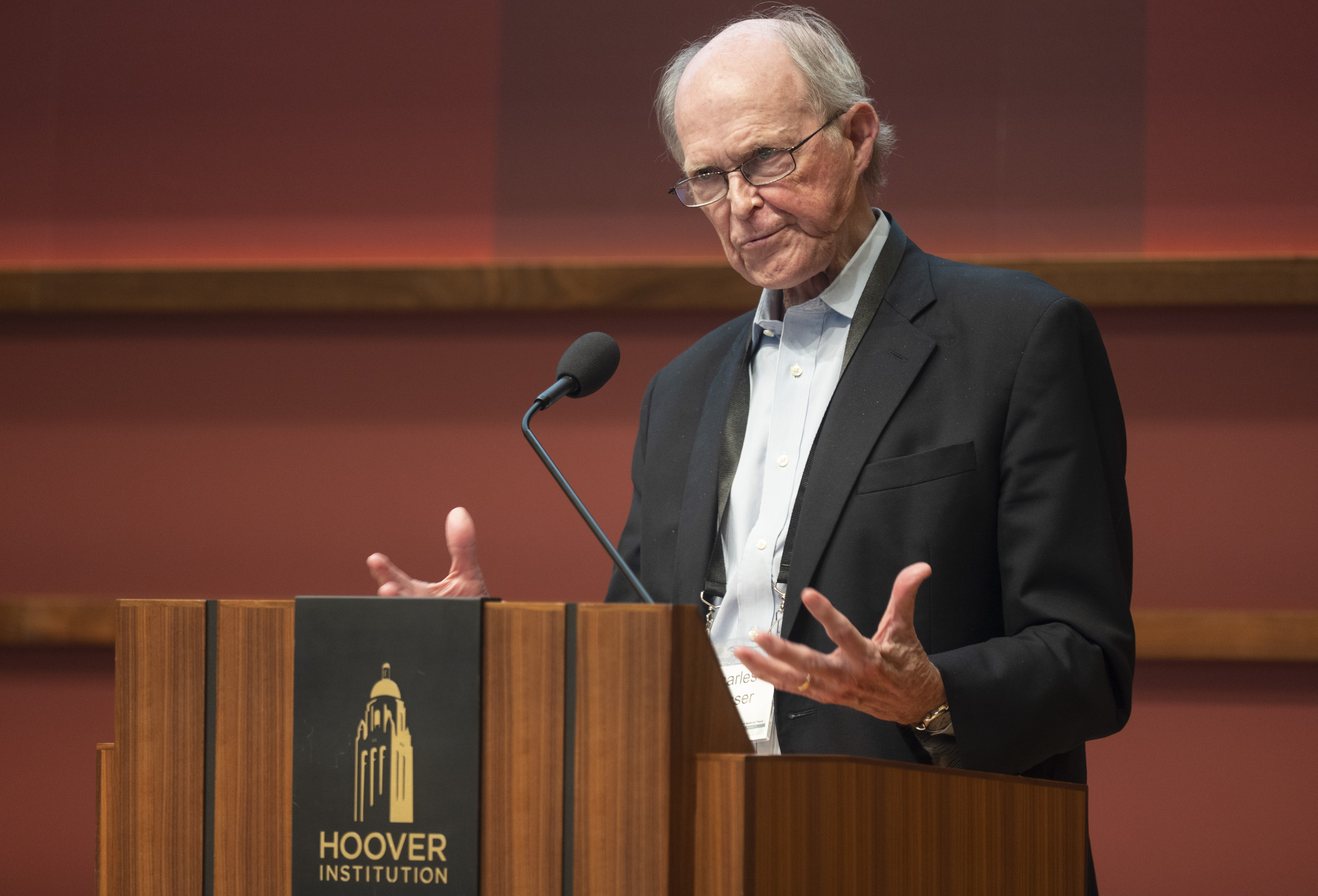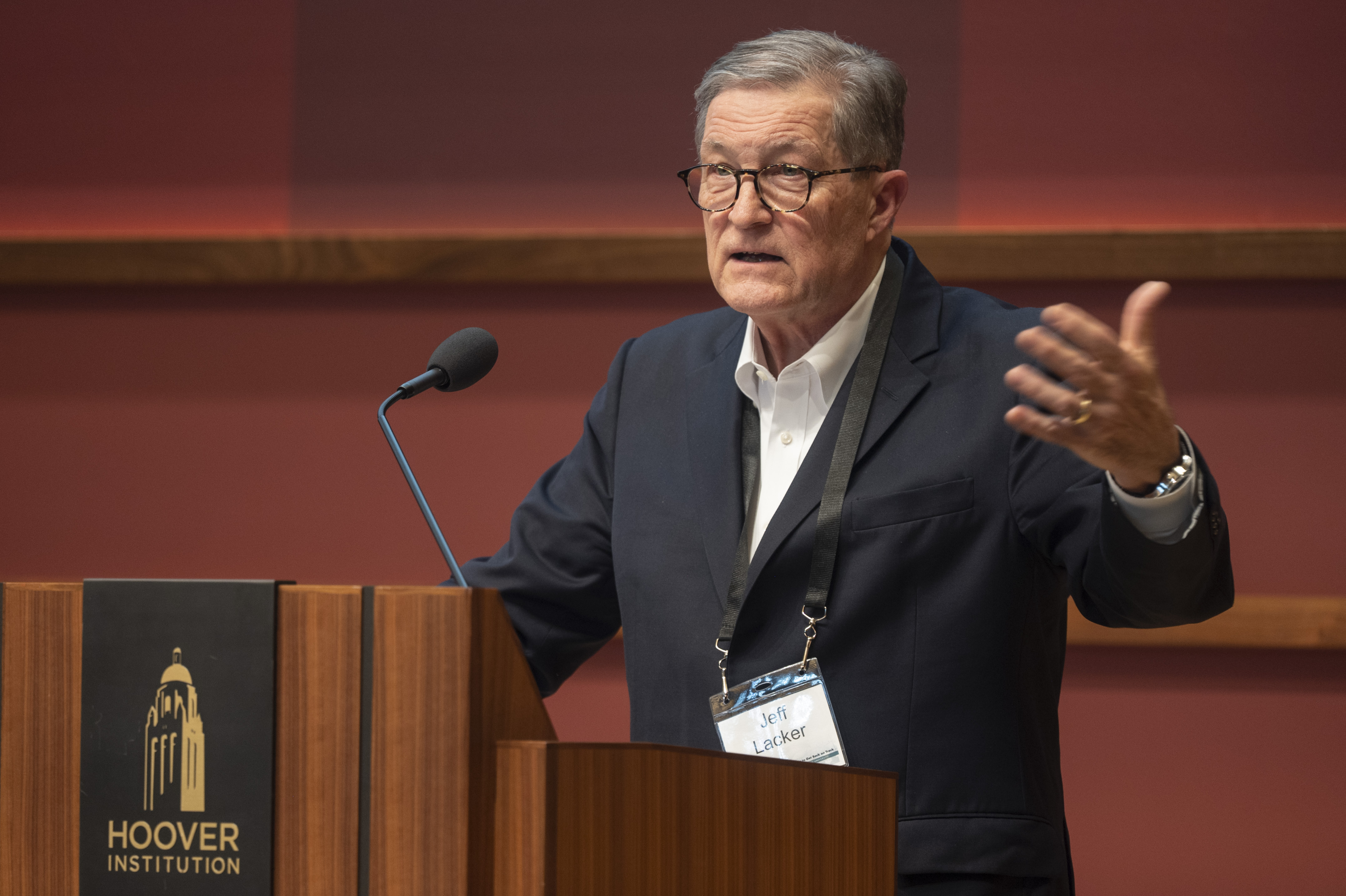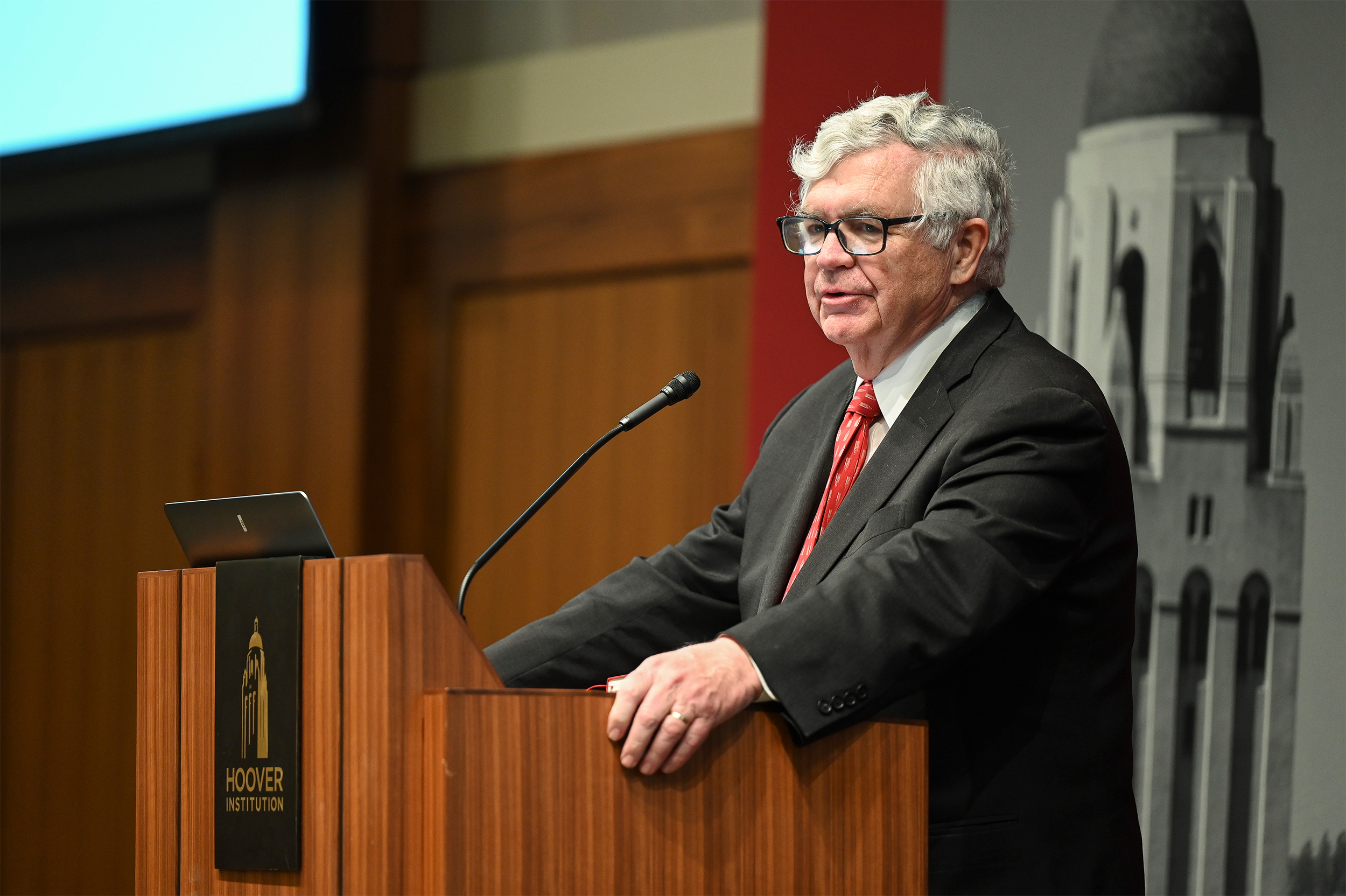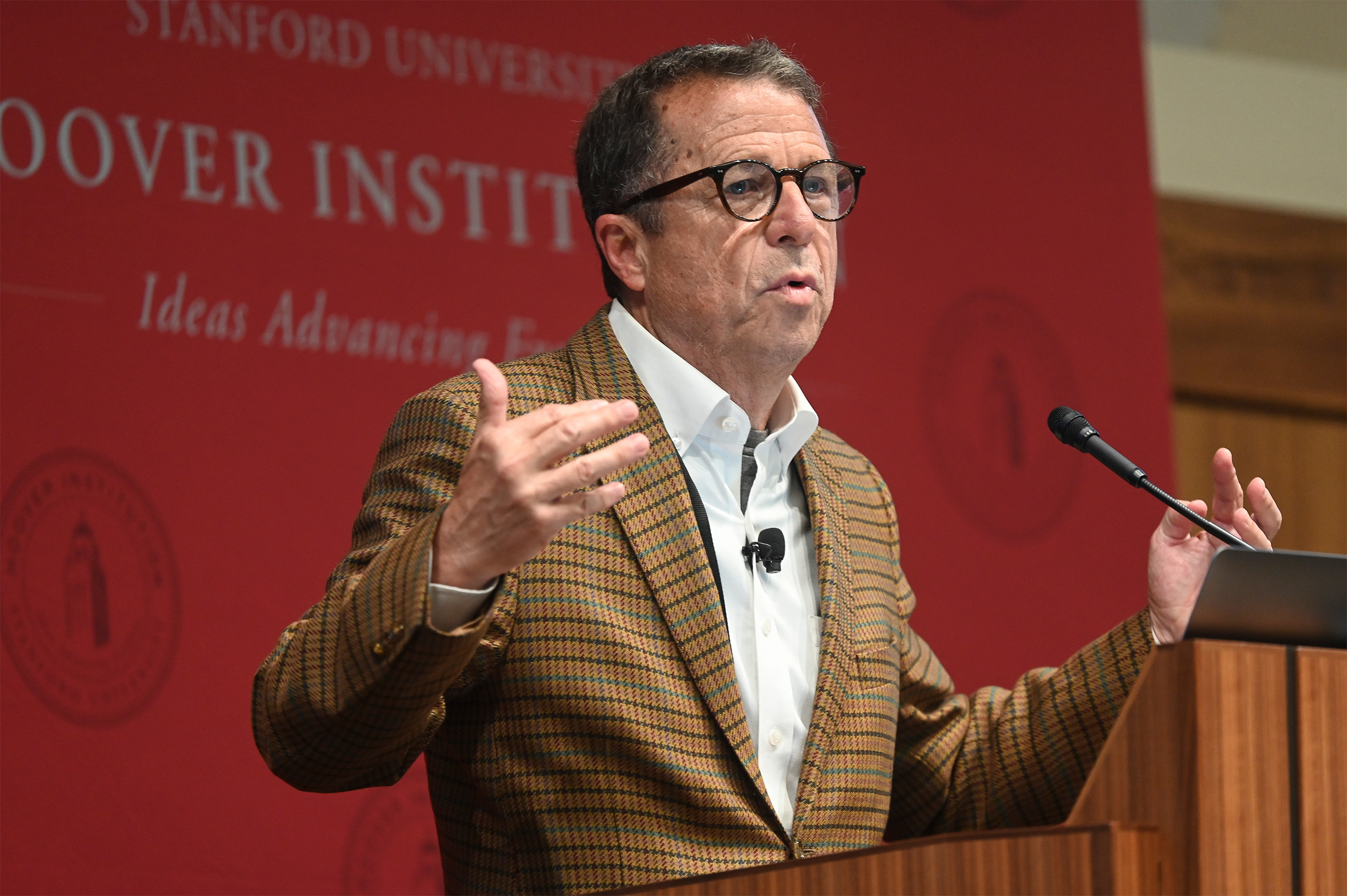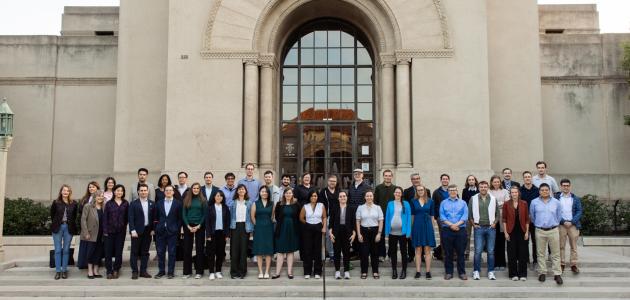Hoover Institution (Stanford, CA) – The Hoover Institution hosted its thirteenth Monetary Policy Conference on Friday, May 12, gathering prominent scholars for discussions on how to get the economy back on track following a period of record inflation not experienced since the 1970s.
Chaired by Hoover fellows John Taylor, John Cochrane, and Michael Bordo, the conference was opened by the Institution’s director, Condoleezza Rice, who congratulated Taylor on the thirtieth anniversary of the monetary policy strategy he formulated (the Taylor Rule) to foster price stability and economic growth.
In her introductory remarks, Rice expressed concerns about the destabilization of the international order that is being driven by such factors as the Chinese Communist Party’s global ambitions, Russia's invasion of Ukraine, and the rapid advancement of artificial intelligence. Rice also highlighted the negative effects of globalization on certain segments of the US population, leading to the rise of populist movements that continue to significantly shape politics in America. She emphasized the need for international cooperation to overcome geopolitical tensions and rebuild a sustainable global order in which peace and prosperity can thrive.
Thirtieth Anniversary of the Taylor Rule - Watch Session
Richard Clarida, Columbia University; John Lipsky, Johns Hopkins University and former deputy managing director, International Monetary Fund; Volker Wieland, Goethe University
Chair: John Cochrane, Hoover Institution
John Lipsky, former deputy director of the International Monetary Fund, reflected on the history and legacy of the Taylor Rule, a monetary policy strategy that was first presented at a conference at Carnegie Mellon University in 1993. Put simply, the Taylor Rule says that the Federal Reserve should raise the interest rate when inflation increases and lower the interest rate when gross domestic product (GDP) declines. The desired interest rate is one-and-a-half times the inflation rate, plus one-half times the gap between GDP and its potential, plus one.
John Cochrane pointed out that before the Taylor rule, the universal doctrine of monetary policy was targeting money growth instead of interest rates. He also explained that the rule was never intended to be used mechanically (as if policy decisions were to be driven by a solution to an equation), but instead as a benchmark strategy that can predictably guide expectations.
The Taylor Rule accurately predicted rates that helped foster economic prosperity in the 1990s (and in the 1980s when similar types of rules were applied). When central bankers abandoned the Taylor Rule in favor of discretionary policy in the first decade of the 2000s, negative economic consequences followed.
In their presentations, Richard Clarida and Volker Weiland described how—coming out of the COVID-19 pandemic and the ensuing inflation surge—the Taylor Rule can help get the economy back on track.
Click here to read Richard Clarida’s presentation slides.
Click here to read Volker Weiland’s presentation slides.
Click here to read John Lipsky’s presentation slides.
Financial Regulation: SVP and Beyond - Watch Session
Darrell Duffie, Hoover Institution and Stanford University; Randal Quarles, The Cynosure Group; Amit Seru, Hoover Institution and Stanford University
Chair: Anat Admati, Stanford University.
In this session, panelists examined the causes behind the collapse of Silicon Valley Bank, First Republic Bank, and Signature Bank.
In his presentation, Darrell Duffie explained that current regulations didn’t anticipate that more depositors would leave these banks in a single day than what would have been expected in one month of a bank run. Moreover, regulations only provide 25‒40 percent liquidity coverage. In an era in which mobile banking technology, aided by the influence of social media, enables large depositors to move their money far faster than in the past, these banks would have logically needed 100 percent coverage, according to Duffie’s analysis. In this scenario, Duffie argued that banks should be able to post their assets to the Federal Reserve’s discount window to receive the liquidity that they need.
Randal Quarles agreed that there is a liquidity issue in the banking system and expressed concern that the Federal Reserve has shifted the responsibility of maintaining liquidity onto banks instead of acting as a lender of last resort as it was originally founded.
Amit Seru advanced another reason for the collapse of these banks. According to Seru, after the Federal Reserve had made steep rate hikes, $2 trillion worth of bank assets were severely devalued. This resulted in a solvency run, whereby enough uninsured depositors withdrew their money out of banks on the expectation that other uninsured depositors were leaving because of these asset losses. To mitigate future solvency crises in the short term, he suggested that regulators conduct stress tests to separate solvent versus insolvent banks. Over the long term, he said, regulators need to anticipate interest rate risks by ensuring that banks have sufficient equity capital. Seru also explained that there was a failure of regulatory supervision, in part because states were too soft on these banks that they depended on to help sustain local economies.
Click here to read Darrell Duffie’s presentation slides.
Click here to read Amit Seru’s presentation slides.
Disinflation and the Stock Market - Watch Session
Peter Henry, Hoover Institution and Stanford University
Lead Discussant: Josh Rauh, Hoover Institution and Stanford University
Chair: William Nelson, Bank Policy Institute
Peter Henry presented a recently published paper titled "Disinflation and the Stock Market," which he coauthored with Anusha Chari, professor of economics at the University of North Carolina–Chapel Hill. The study focuses on eighty-one disinflation programs in twenty-one developing countries between 1973 and 1994. Henry and Chari’s findings reveal that when policy makers implement disinflation programs to combat high inflation, the stock market index of their country experiences a positive twelve-month return of 48 percent. However, when policy makers attempt to transition from moderate to low inflation, the stock market index suffers an 18 percent loss. Based on this evidence, Henry concluded in his presentation (and the paper) that the United States is unlikely to achieve a quick, low-cost transition from moderate inflation to the Federal Reserve's 2 percent target. In other words, a soft landing is improbable.
Click here to read Peter Henry’s paper (coauthored with Anusha Chari).
Inflation Targeting in Japan, 2013‒23 - Watch Session
Haruhiko Kuroda, Former Governor, Bank of Japan
During his lunch keynote remarks, Haruhiko Kuroda, former governor of the Bank of Japan, discussed how that institution pursued a 2 percent inflation rate in the past decade. In 2013, Kuroda began a policy of substantial quantitative easing to reverse deflation and achieve that 2 percent target in two years. In March 2014, the Consumer Price Index (CPI) rose to a level of 1.4 percent because of strong economic growth and a stock market rebound. However, an increase in the consumption tax rate from 5 to 8 percent that spring combined with a sluggish rise in wages led to a subsequent decline in CPI. Between 2015 and 2016, prices were dampened again when over that period the cost of oil dropped from $100 to $30 per barrel.
In January 2016, the Japanese central bank introduced negative interest rates, and in September of that year it was announced that monetary easing would continue until interest rates exceeded the 2 percent target. However, these price increases were slightly slowed down when the government implemented another increase in the consumption tax (from 8 percent to 10 percent) in October 2019. Disinflation reemerged in 2020 when the COVID-19 pandemic substantially reduced global economic activity. Due to the war in Ukraine and ensuing shortages in energy and food supply, prices have risen to its current high of above 3 percent. Kuroda expressed his belief that the central bank will soon achieve its 2 percent target. Importantly, he said, Japan’s long experience with deflation has been overcome because of strong employment and wage growth over the last 15 years.
Central Bank Balance Sheets - Watch Session
Niall Ferguson, Hoover Institution; Paul Schmelzing, Boston College
Lead Discussant: Barry Eichengreen, University of California‒Berkeley
Chair: Michael Bordo, Hoover Institution and Rutgers University
Milbank Senior Fellow Niall Ferguson and Paul Schmelzing, a professor of history at Boston College, presented their paper titled " The Safety Net: Central Bank Balance Sheets and Financial Crises, 1587-2020." The study examines the historical evolution of central bank balance sheets across seventeen economies spanning four centuries.
In their presentation (and in the paper), Ferguson and Schmelzing asserted that the size of central bank balance sheets has varied significantly over time, reflecting prevailing economic conditions. While expansions have historically been driven by government financing during wars and geopolitical emergencies, more recent expansions have been prompted by financial turmoil.
The scholars also explored the historical use of lender-of-last-resort interventions, examining the ideological beliefs of central bank governors, whom they categorize as either “hawks” or “doves.” In their analysis, Ferguson and Schmelzing contended that while providing liquidity support during financial crises can yield short-term economic stability, it also increases the likelihood of moral hazard effects and future boom-bust cycles.
Click here to read Niall Ferguson and Paul Schmelzing’s paper (coauthored with Martin Kornejew and Moritz Schularick). Click here to read their presentation slides.
Click here to read Barry Eichengreen’s presentation slides.
Forecasting Inflation and Output - Watch Session
Mickey Levy, Berenberg Capital Markets
Lead Discussant: Steven Davis, Hoover Institution
Chair: James Wilcox, University of California‒Berkeley
Mickey Levy, the chief economist for Americas and Asia at Berenberg Markets, presented his study highlighting the Federal Reserve's errors in monetary policy making. He argued that when inflation started to rise two years ago, the Fed consistently projected that it would return to 2 percent but underestimated the necessary increase in interest rates to achieve its inflation target. Despite evidence indicating that inflation was not solely driven by temporary supply shocks, the Fed only began implementing appropriate measures to address inflation in March 2022.
Levy pointed out that the Fed's approach was based on the experience of the Great Financial Crisis of 2007‒08, during which the Fed kept the interest rate extremely low. However, he highlighted the differences between that recession and the COVID-19 downturn. During the former, the real estate market was devastated, and government spending never reached levels that it had during the pandemic. Thus, the rate of inflation remained relatively low.
Finally, Levy emphasized that the Fed needs to address the sources of its errors, including the failure to capture the effects of fiscal stimulus and significant changes in M2 (cash, and all money deposited into checking accounts, saving accounts, and short-term savings vehicles). He advocated for the Fed to reassess its inflation forecasting methods, consistently apply the Taylor Rule to ensure price stability, embrace diverse perspectives and strategies, and consider various scenarios that could have adverse impacts on the US economy.
During the discussion of Levy's paper, Hoover senior fellow Steven Davis focused on the distorted incentives that led the Fed to miss its inflation projections. Davis highlighted that the Fed preferred to communicate expected lower inflation to maintain credibility, which intensified when it decided to keep the interest rate low, expecting to fulfill its mandate without triggering a recession. This delay in implementing a policy of monetary tightening ultimately led to substantial actual inflation, according to Davis's explanation.
Click here to read Mickey Levy’s paper. Click here to read his presentation slides.
Toward a Monetary Policy Strategy - Watch Session
James Bullard, president, Federal Reserve Bank, St. Louis
Philip Jefferson, vice chair, Federal Reserve Board
Jeff Lacker and Charles Plosser, Shadow Open Market Committee
Chair: John Taylor, Hoover Institution and Stanford University
St. Louis Federal Reserve president James Bullard initiated the session by discussing the reasons behind the Fed's delayed decision to raise interest rates in 2022. He attributed the delay to the accommodative monetary policy response to the COVID-19 crisis aimed at supporting record deficit spending for pandemic relief. Bullard noted that prices are now stabilizing as the impact of the $2 trillion fiscal stimulus diminishes, and the Fed is shifting toward a less discretionary approach, relying more on rules such as the Taylor Rule.
Phillip Jefferson, newly appointed vice chair of the Federal Reserve board of governors, expressed skepticism regarding the notion that the Fed was off track. However, he agreed with conference presenters that the central bank needed to improve consistency in referring to policy rules and in its communication with the public.
Subsequently, Jeff Lacker and Charles Plosser, members of the Shadow Open Market Committee (and former Fed officials), presented their paper, "The Fed Should Talk About the Prescriptions for Systematic Policy Rules." They highlighted the fluctuating public views on the central bank's policy path, despite the Fed's assertive policy tightening and commitment to price stability. To enhance confidence in the Fed's policies, the scholars advocated for referring to systematic policy rules when discussing future interest rate prospects publicly. They also argued that applying these policy rules' prescriptions would help incorporate historical evidence on how monetary policy has been conducted.
Click here to read James Bullard’s presentation slides.
Click here to read Phillip Jefferson’s speech.
Click here to read Jeff Lacker and Charles Plosser’s paper. Click here to read Charles Plosser’s presentation slides.
Latin American Inflation - Watch Session
Sebastian Edwards, University of California‒Los Angeles
During the dinner keynote, Sebastian Edwards, professor of international economics at the University of California‒Los Angeles, gave a presentation on his book titled The Chile Project: The Story of the Chicago Boys and the Downfall of Neoliberalism. The book narrates the journey that began in 1955 when the US Department of State initiated the "Chile Project," whereby Chilean economists would be trained by world-renowned scholars from the University of Chicago, among them the imitable (and late Hoover senior fellow) Milton Friedman. Edwards highlighted how Chile’s "Chicago Boys” successfully implemented a comprehensive package of privatization and deregulation under the dictatorship of General Augusto Pinochet. These reforms led to unprecedented economic growth and made Chile the envy of Latin America. Despite the success, income inequalities widened. These inequalities ultimately manifested in demonstrations across the country in 2019, and in 2021 with the election of President Gabriel Boric, who has vowed to end the neoliberal program.
Click here to read Sebastian Edwards’s presentation slides. Click here to order his book.







